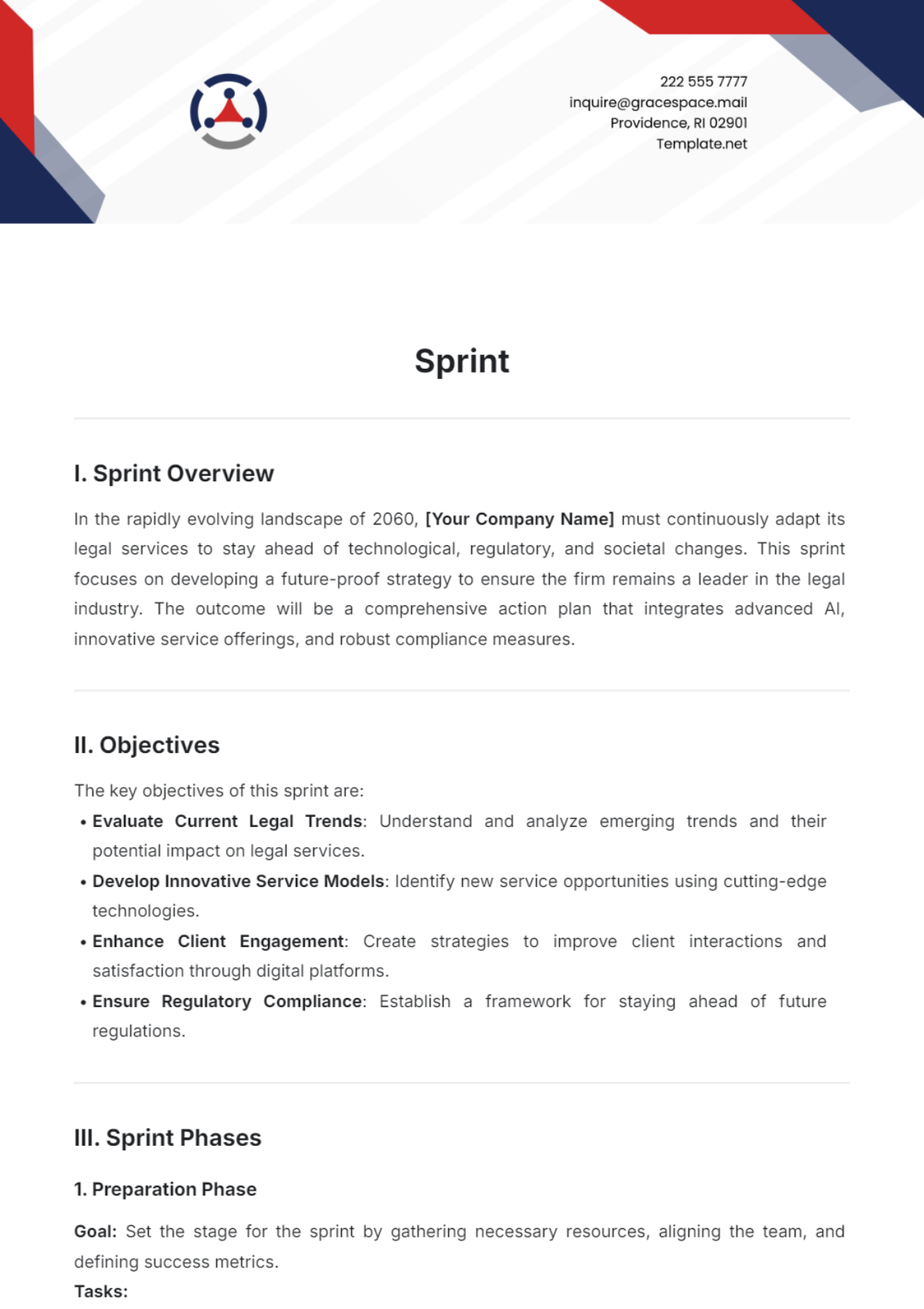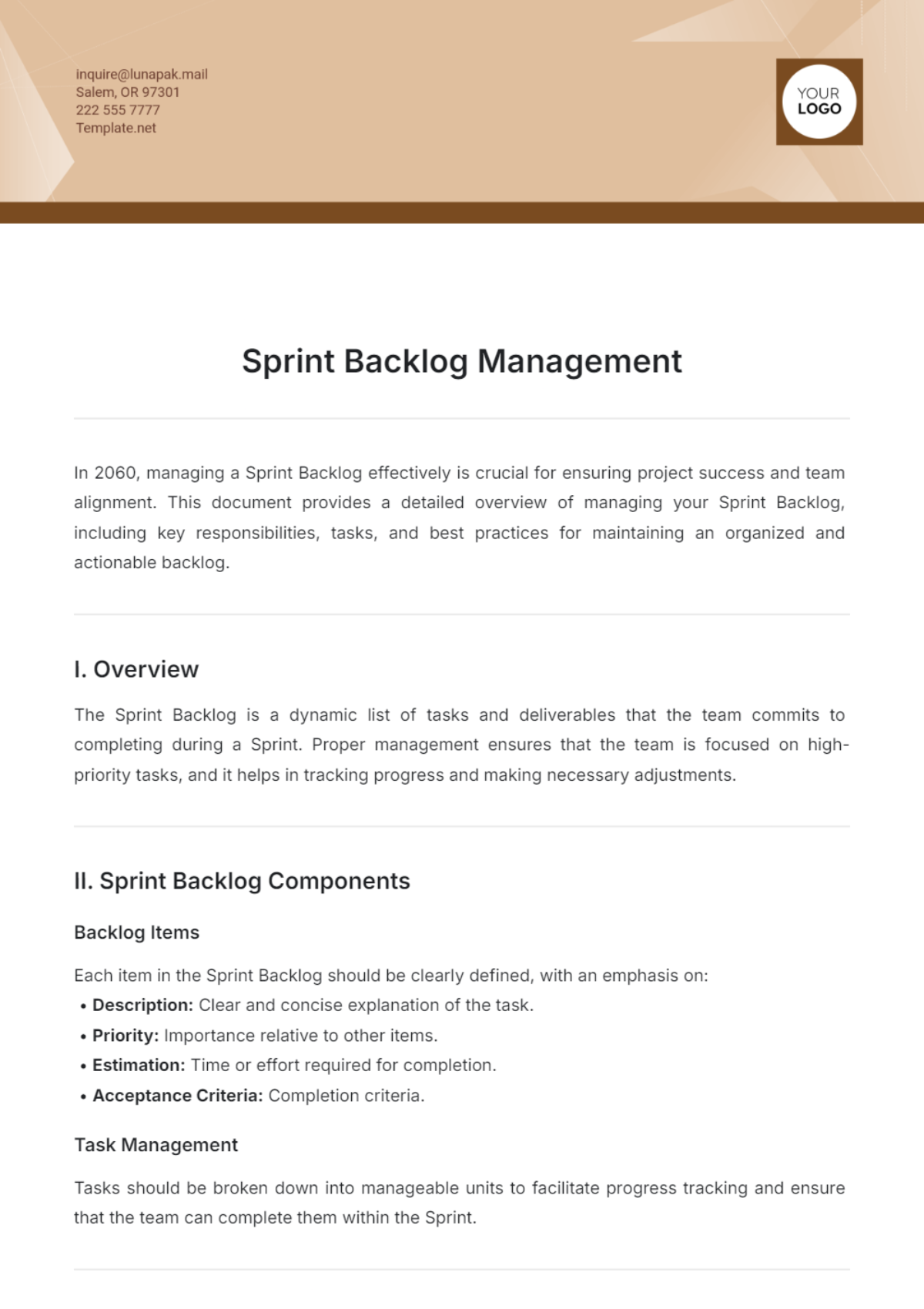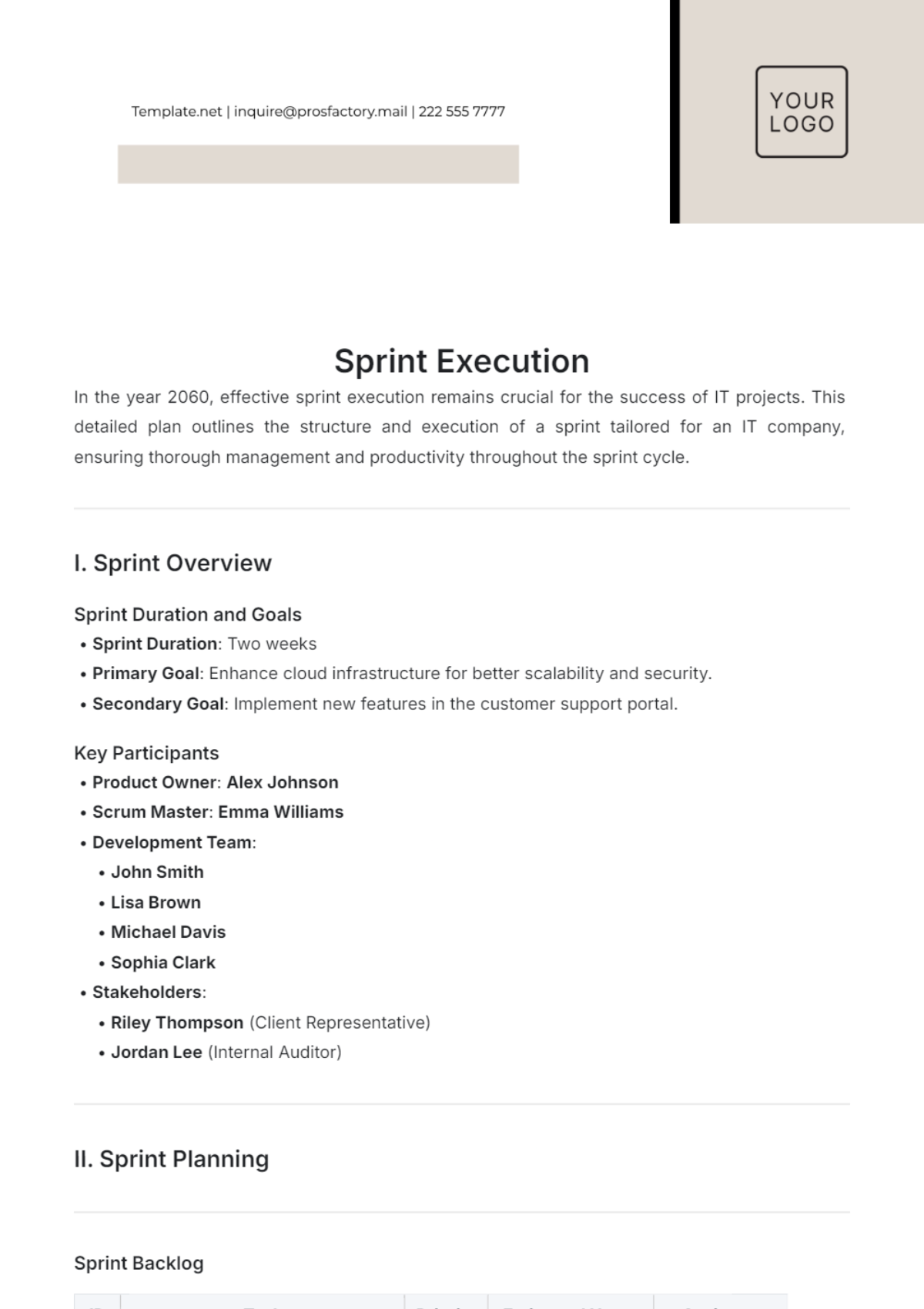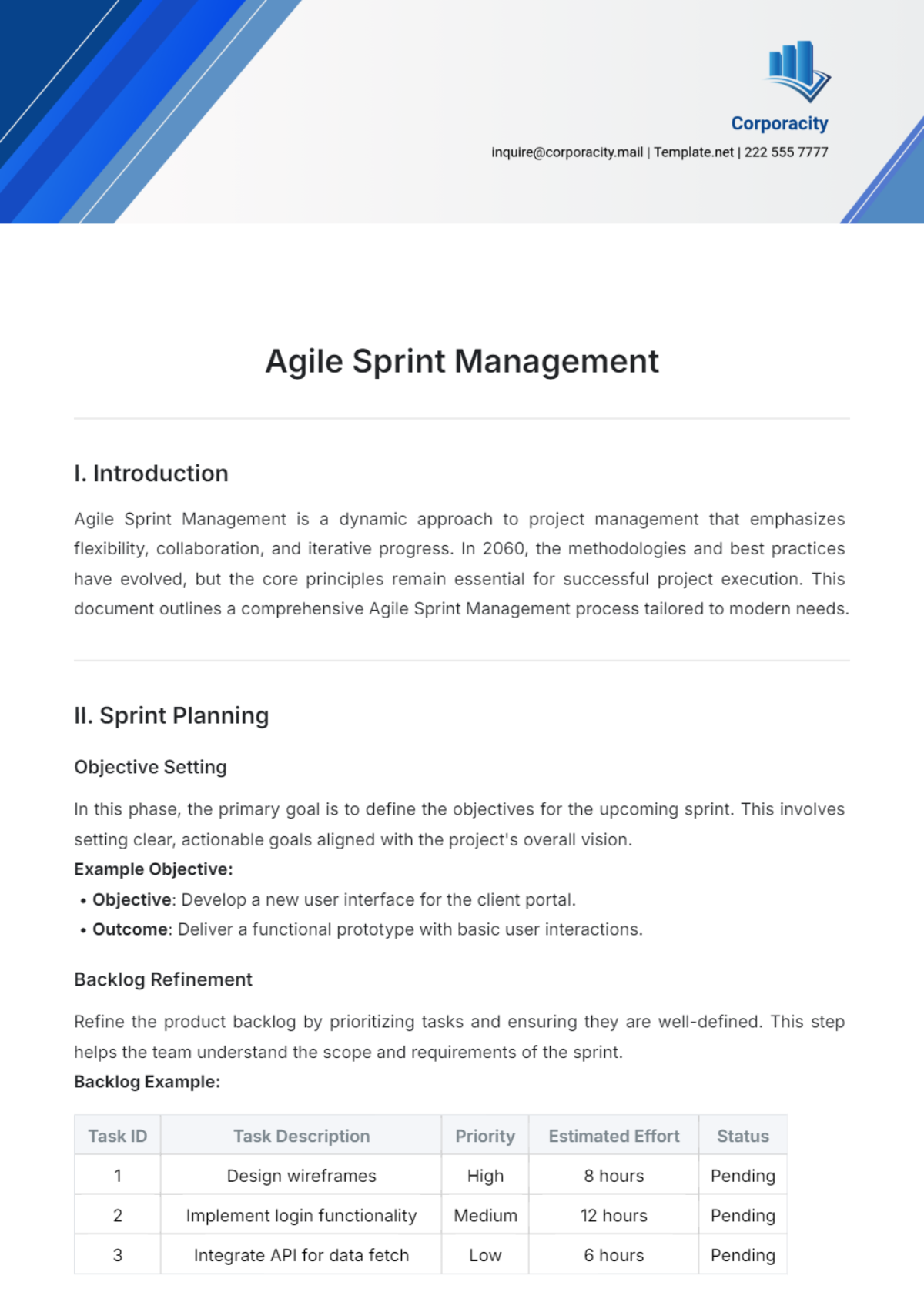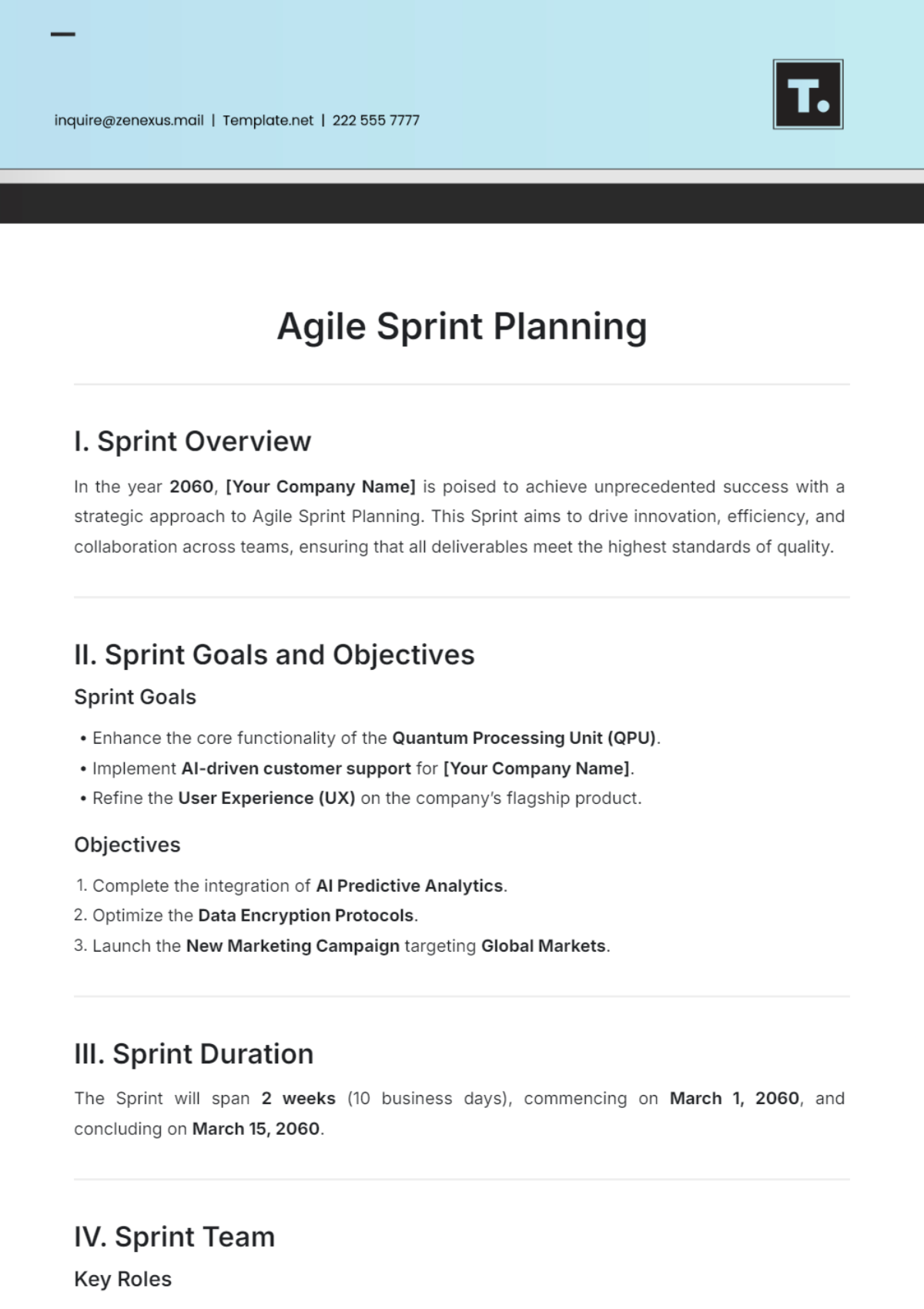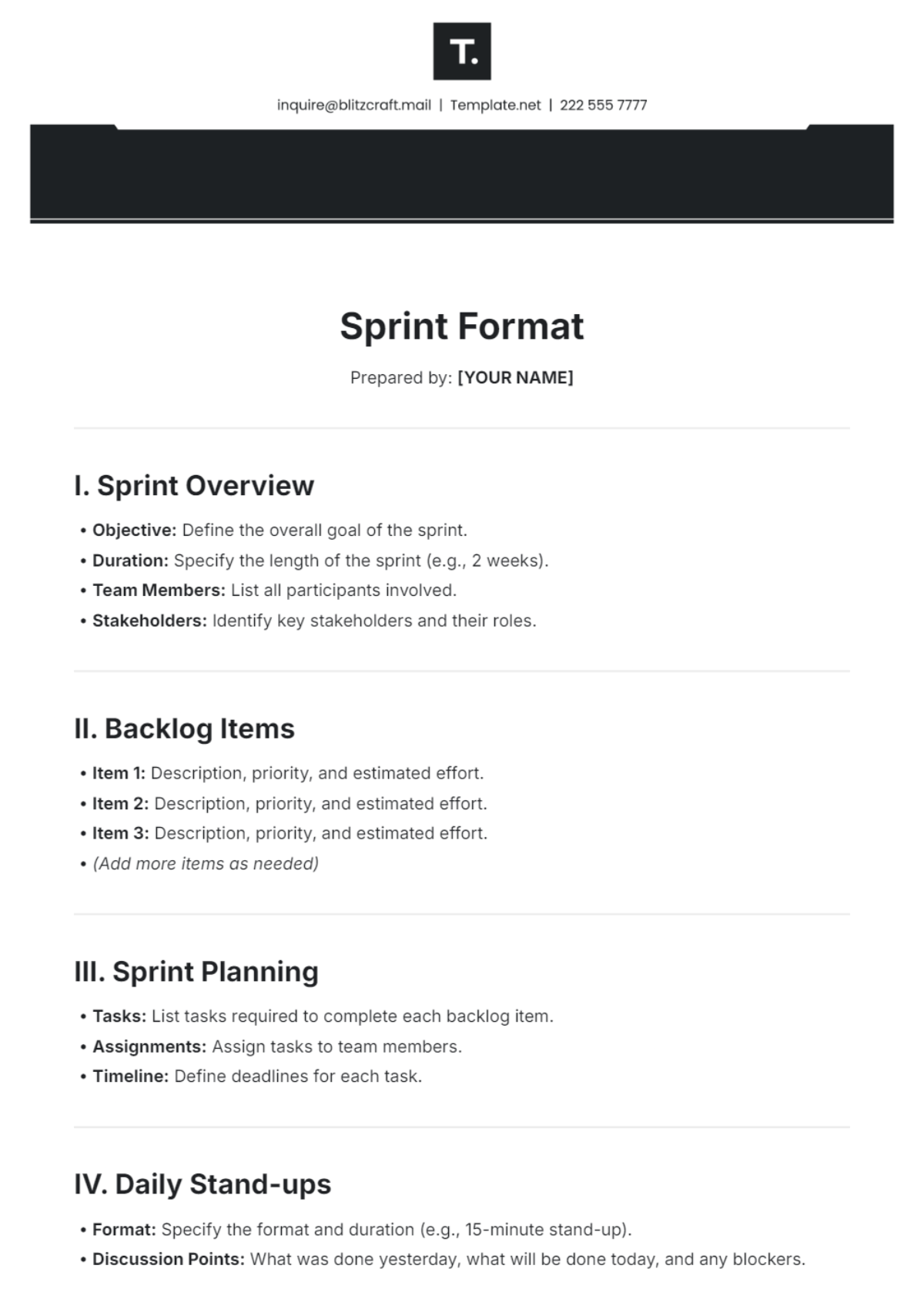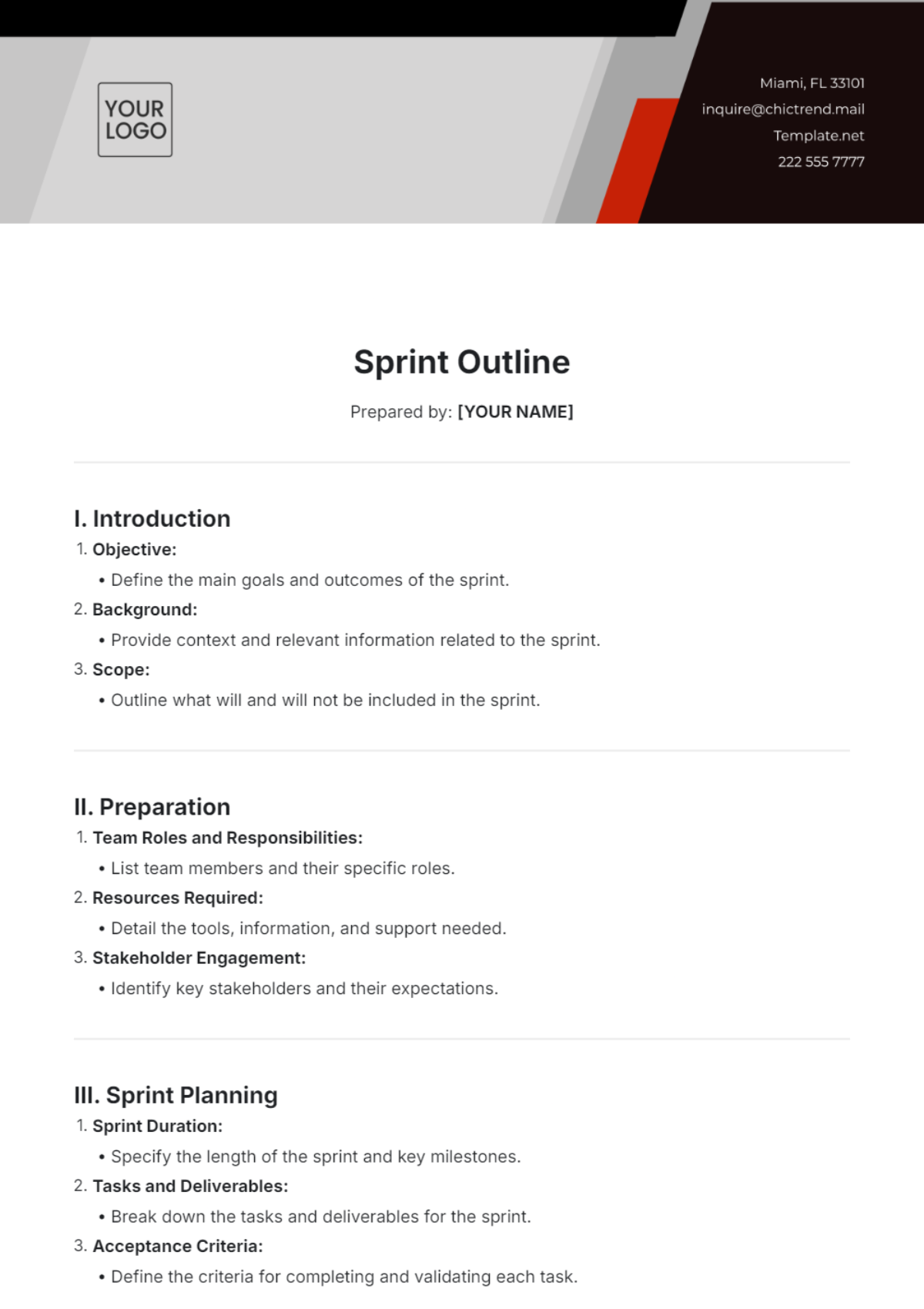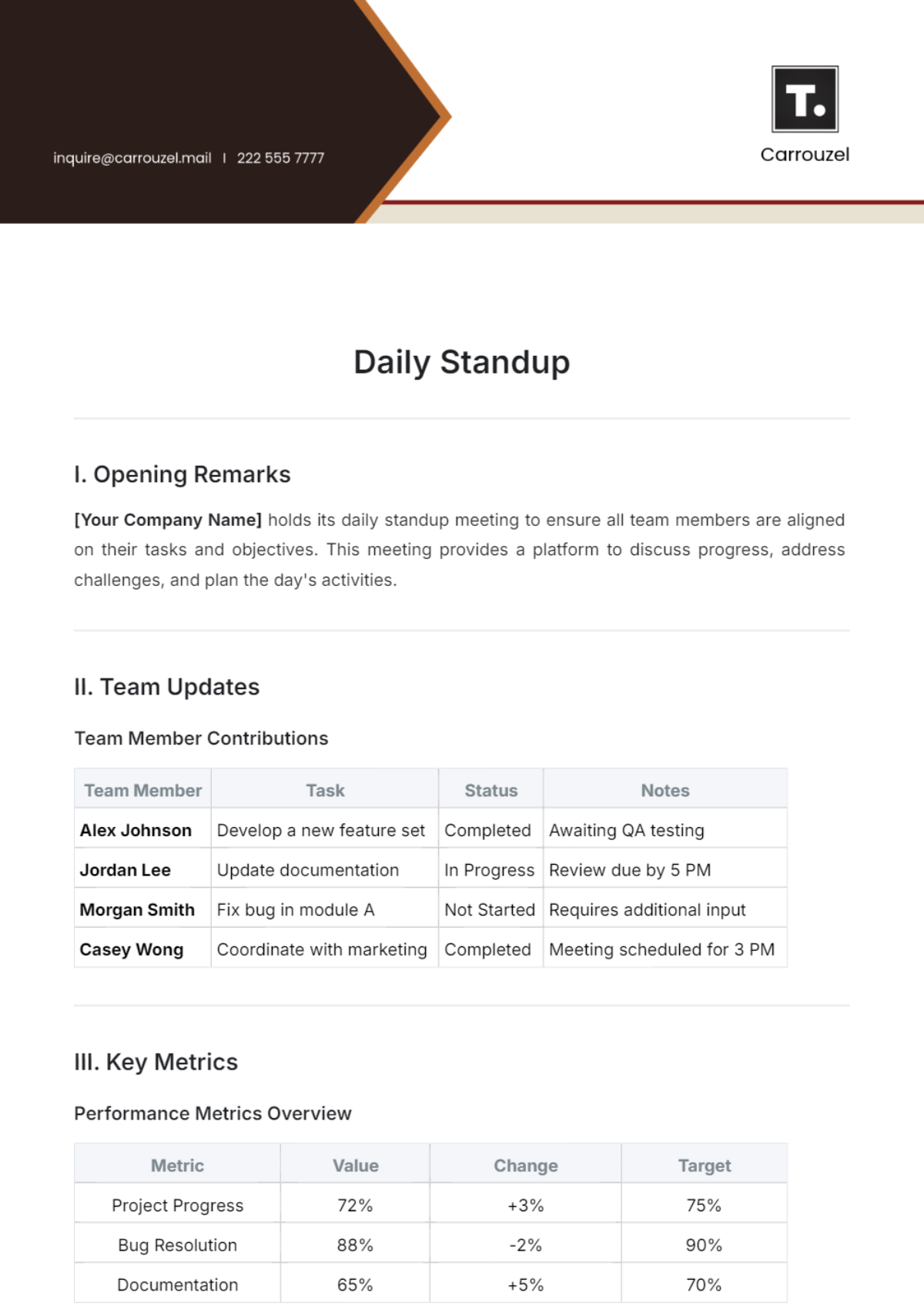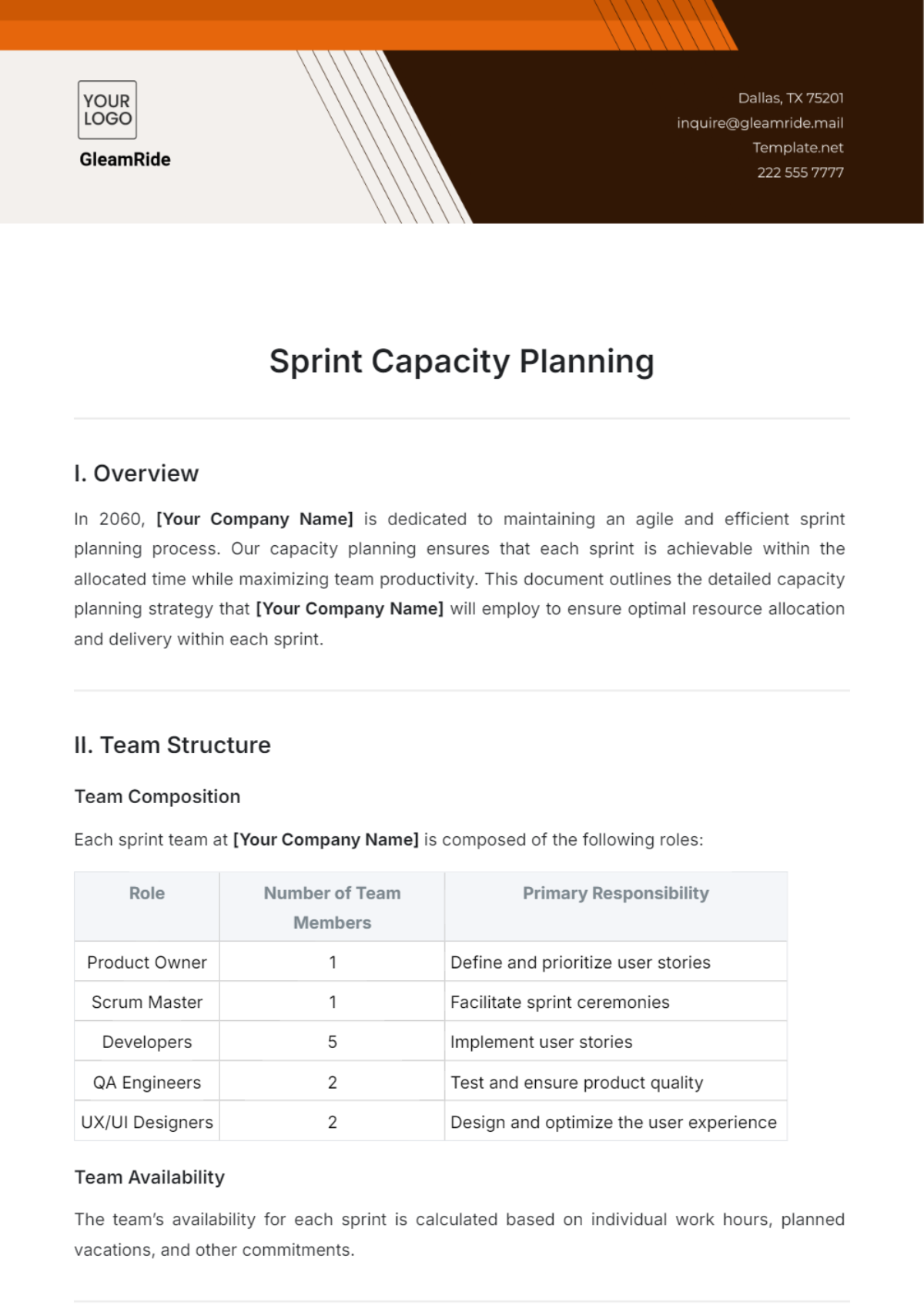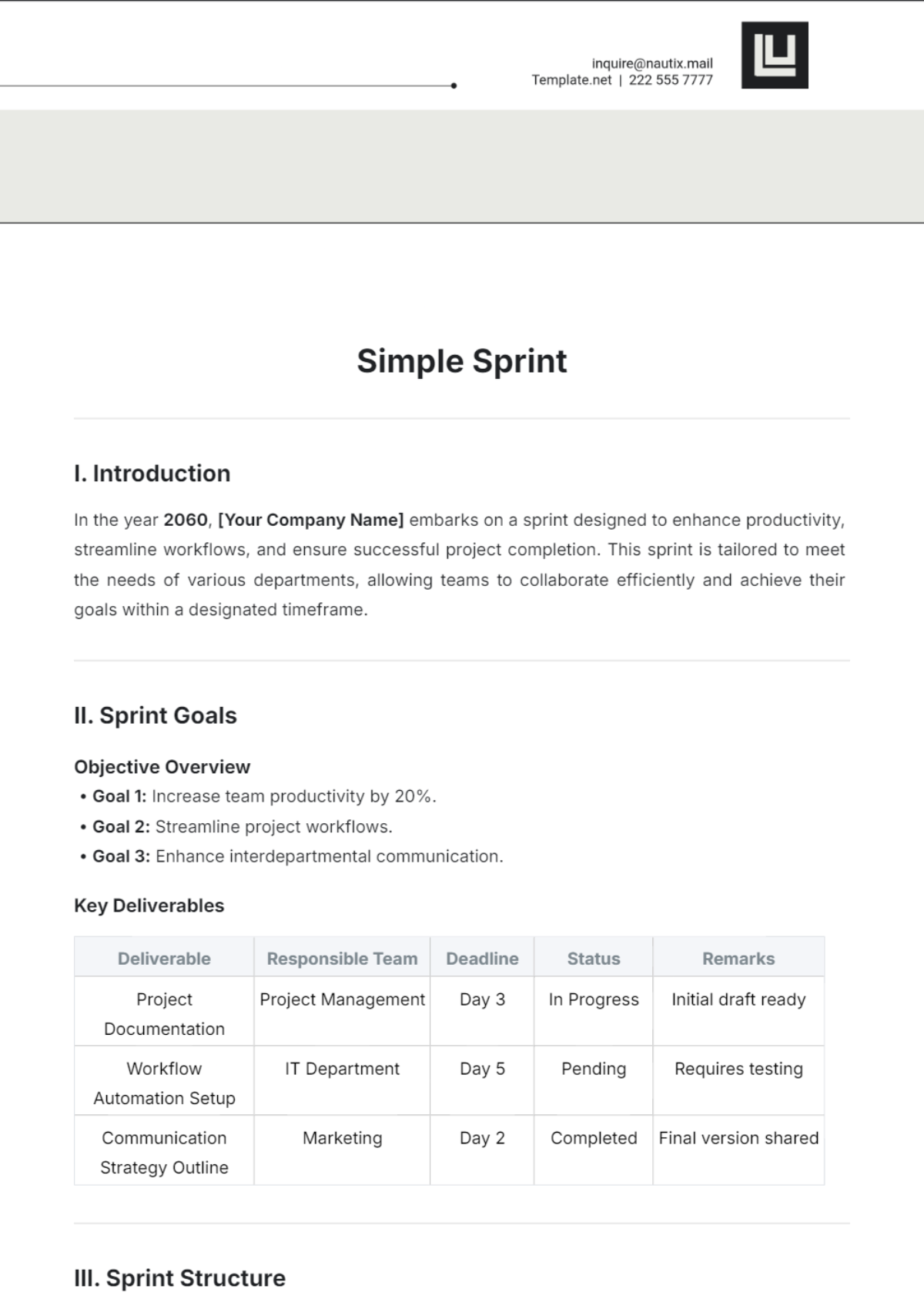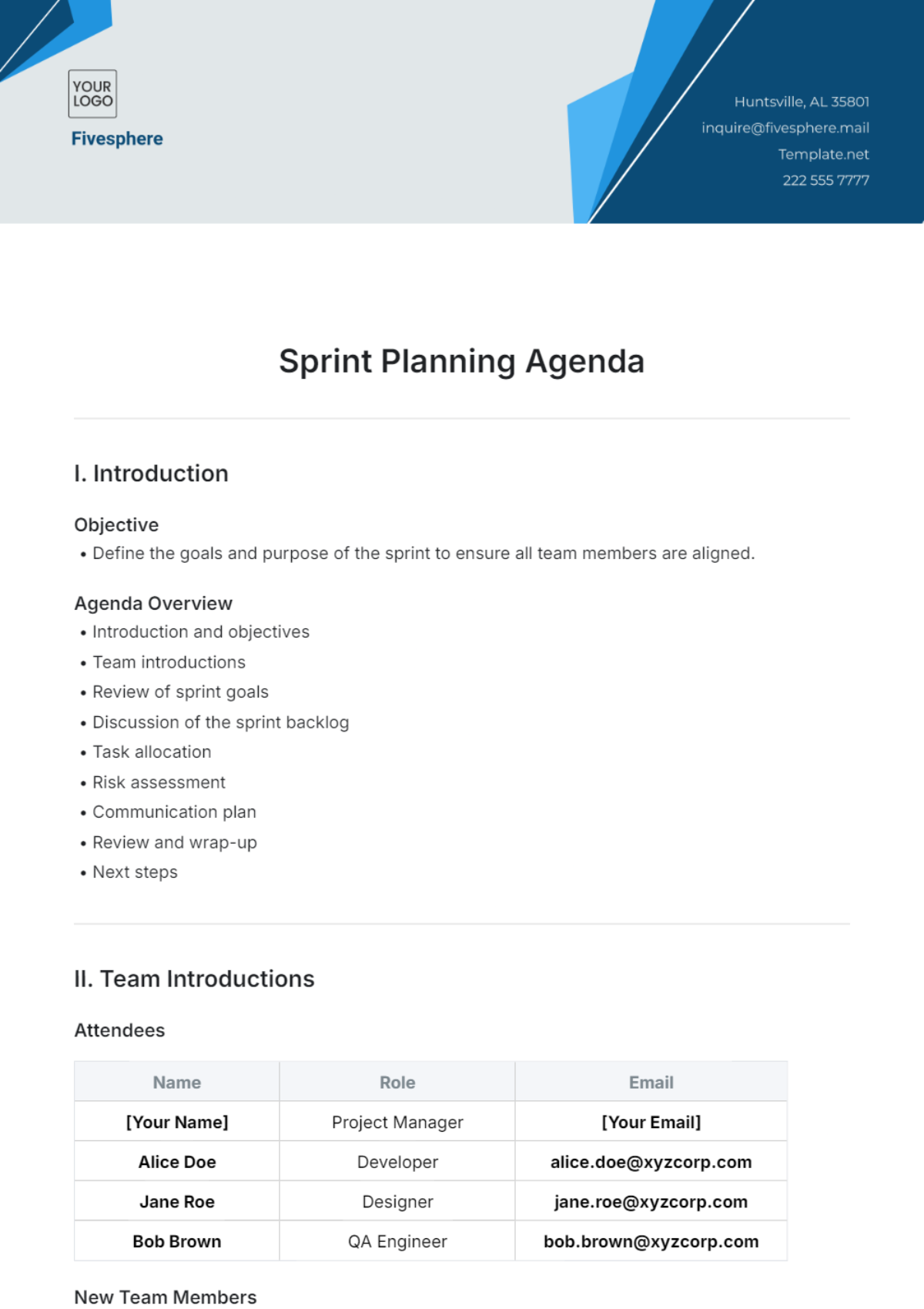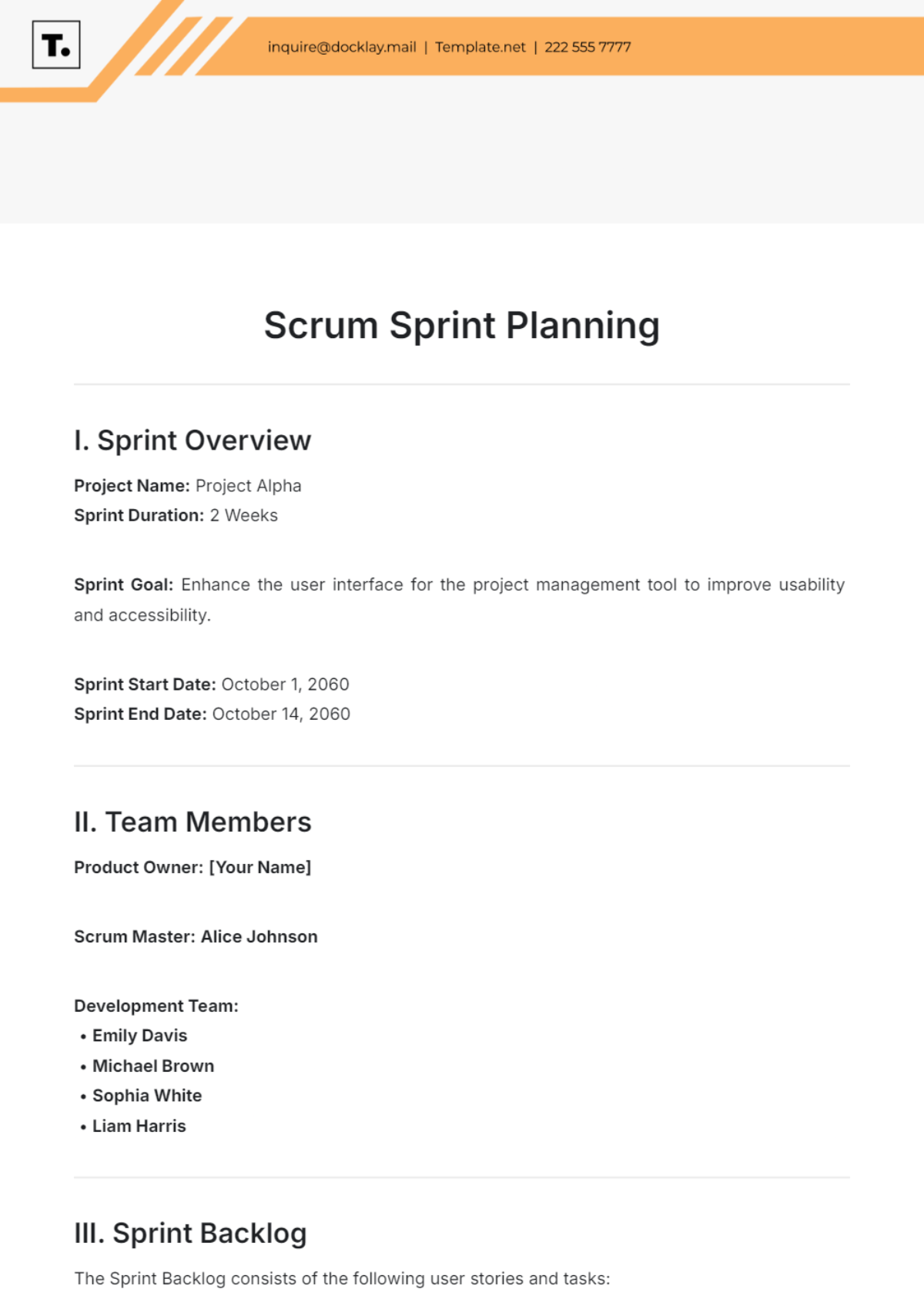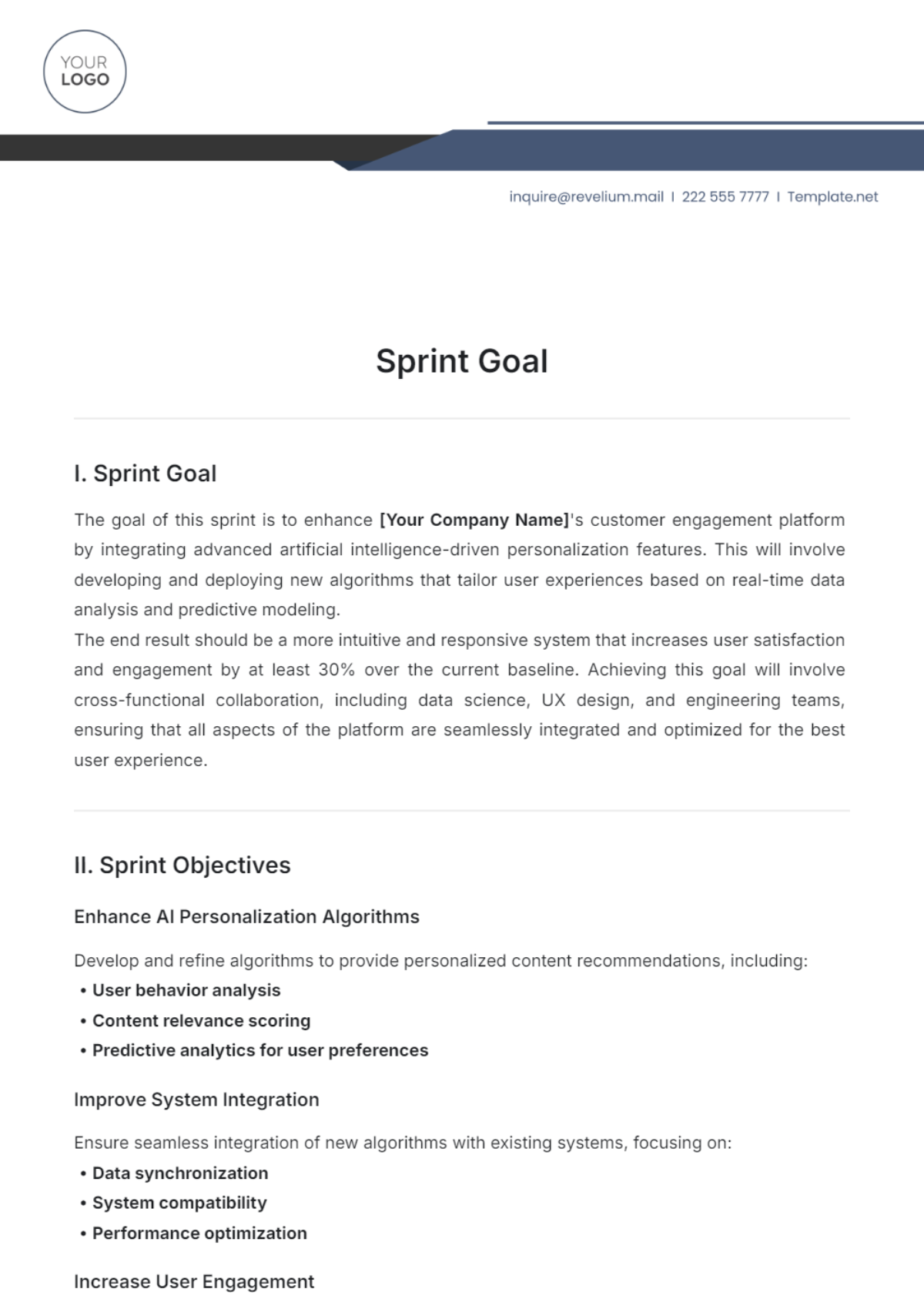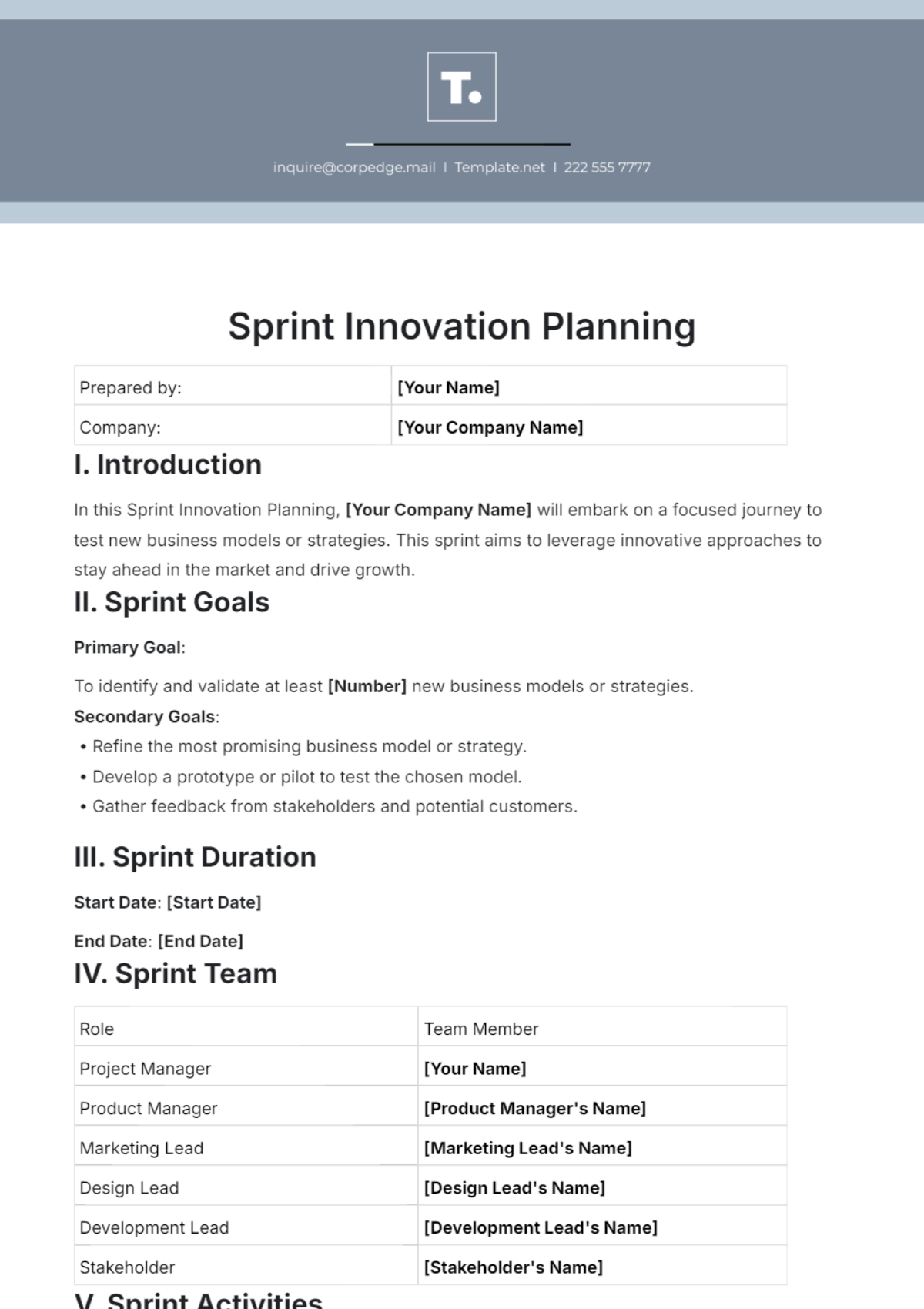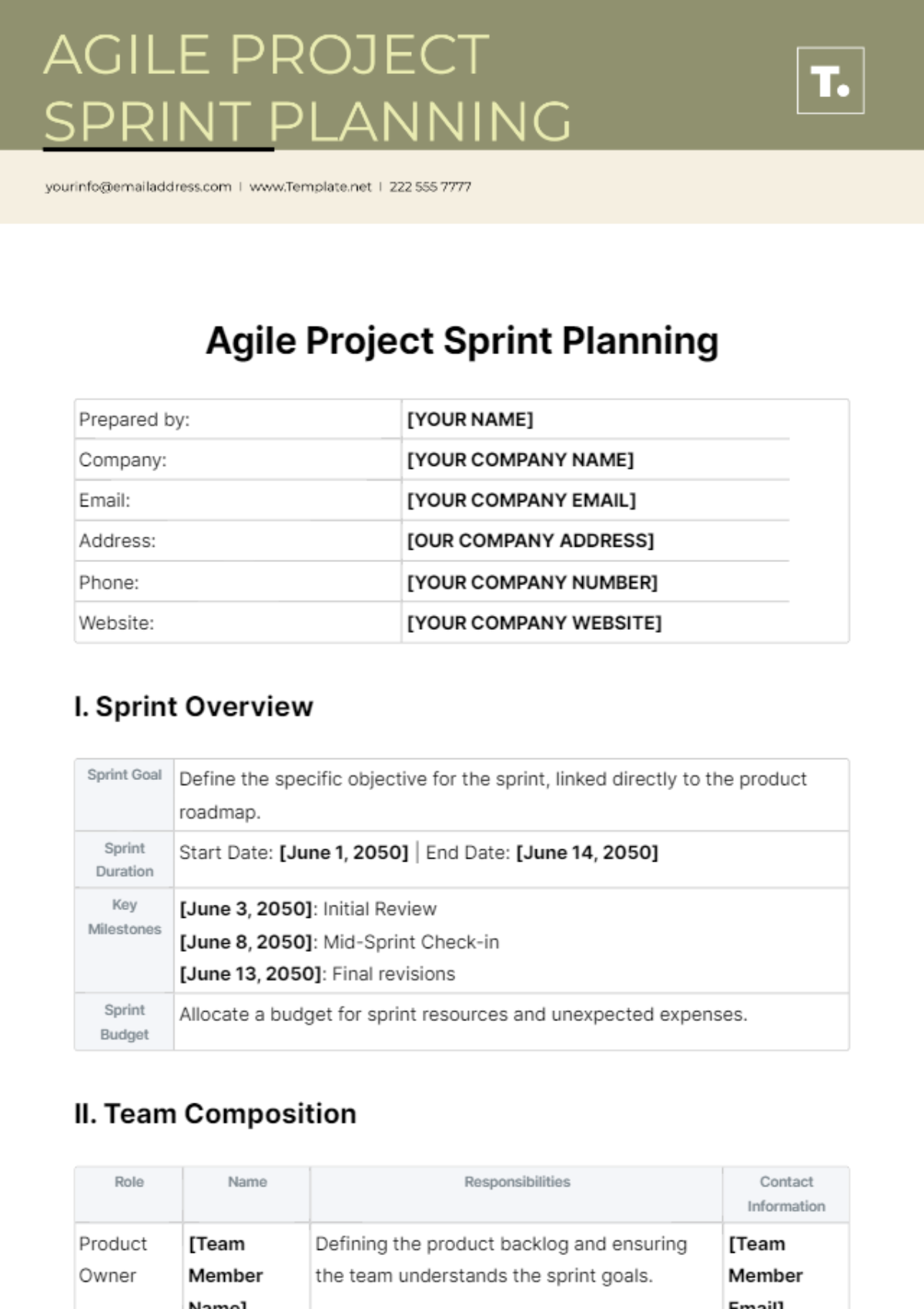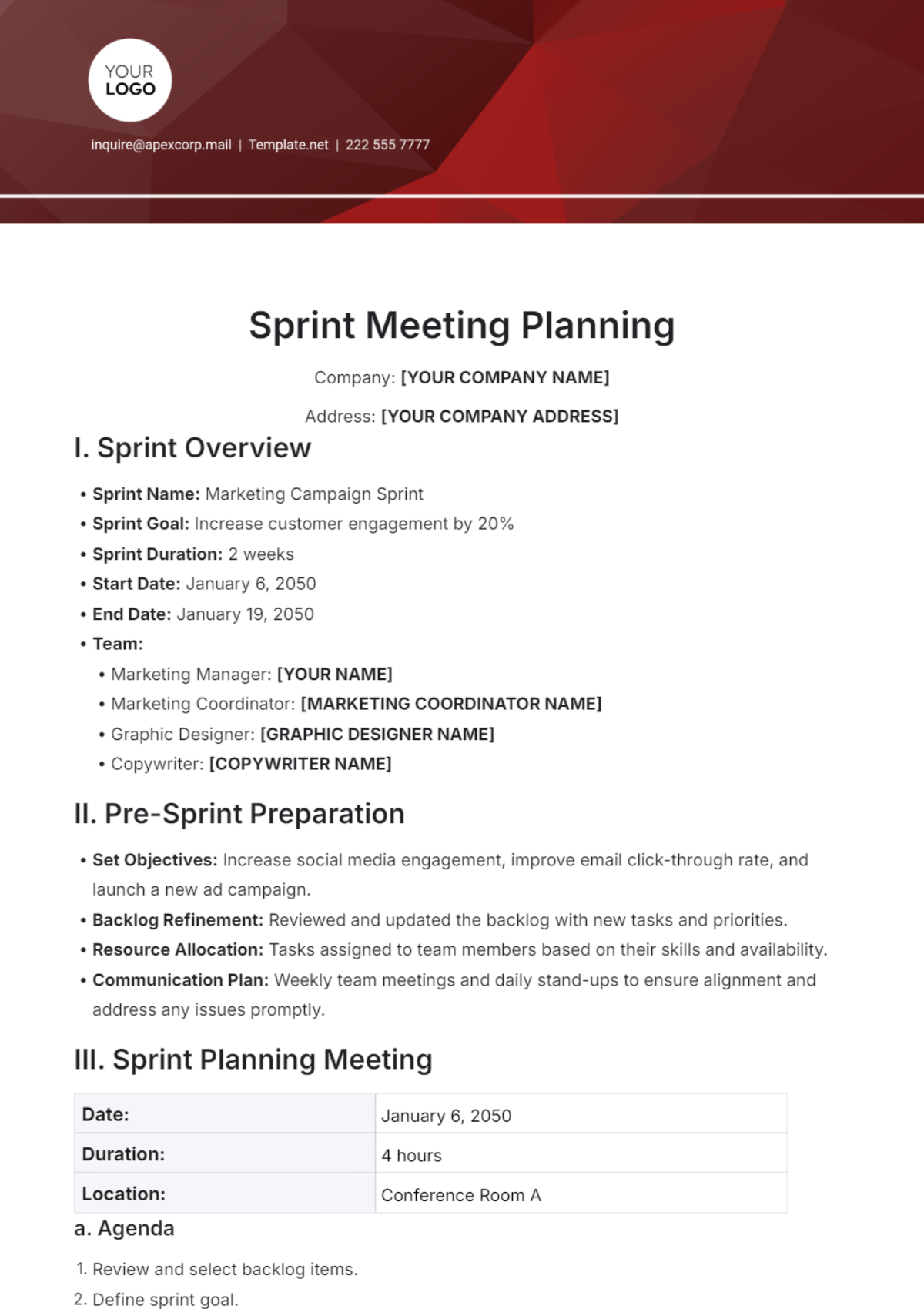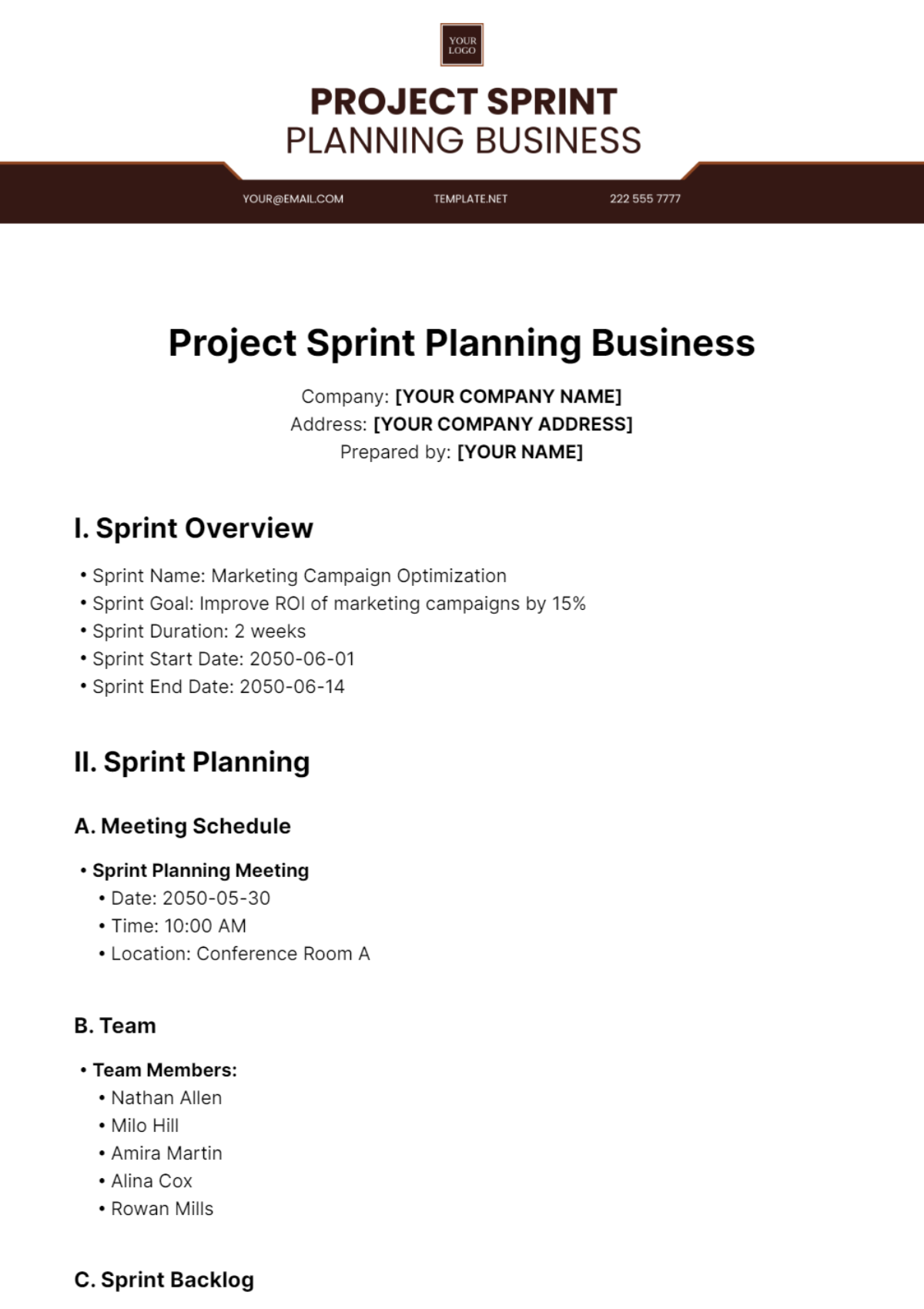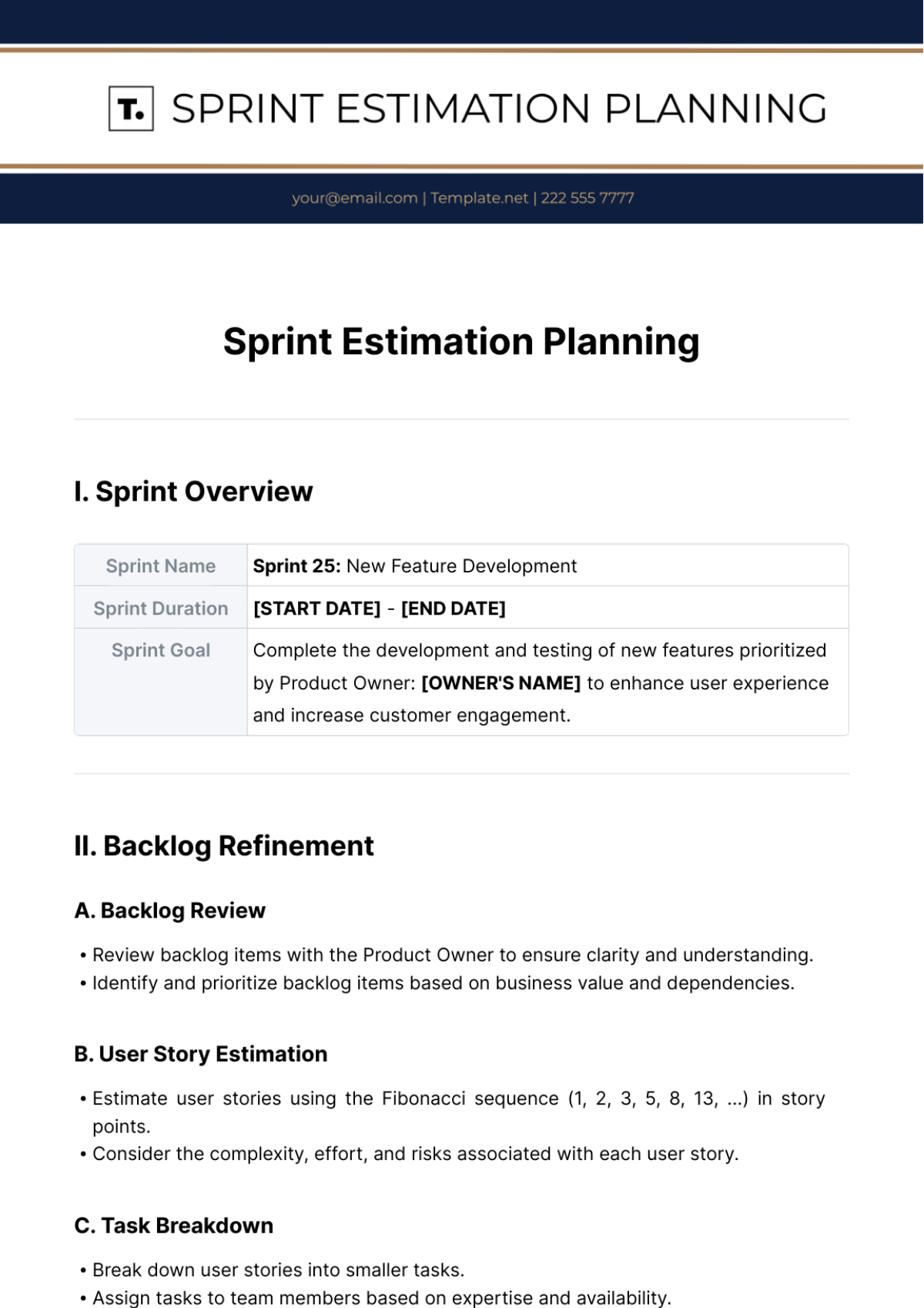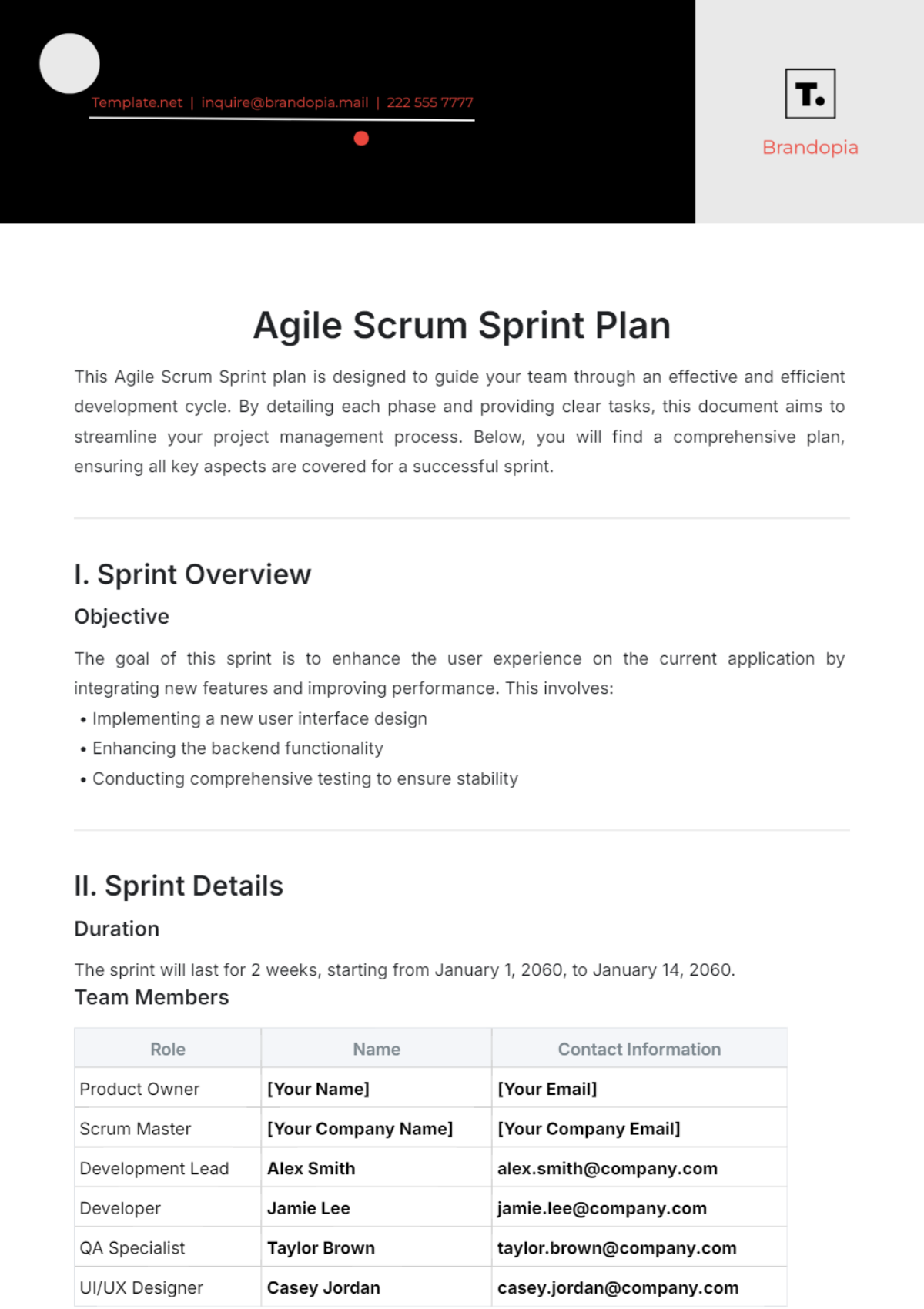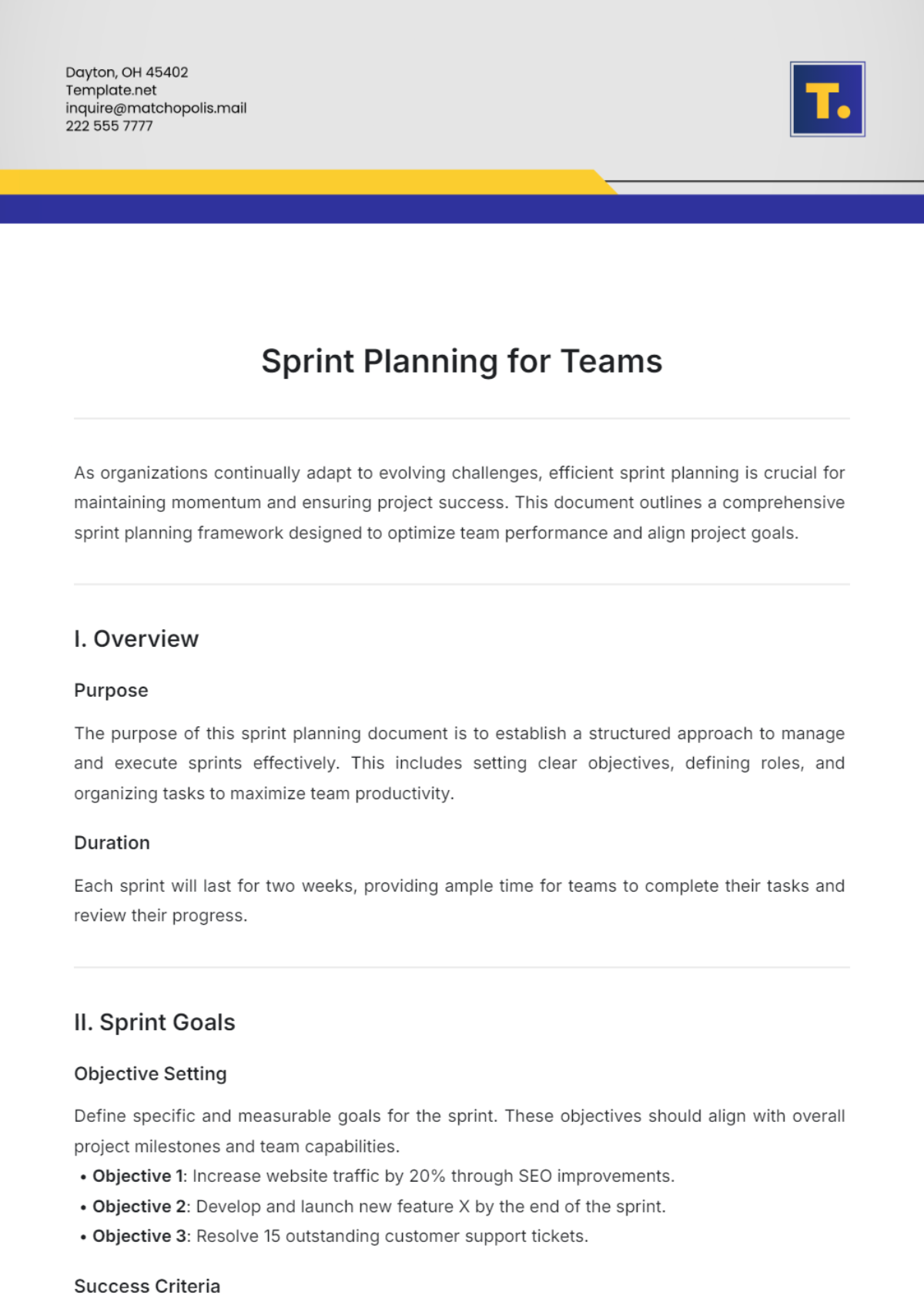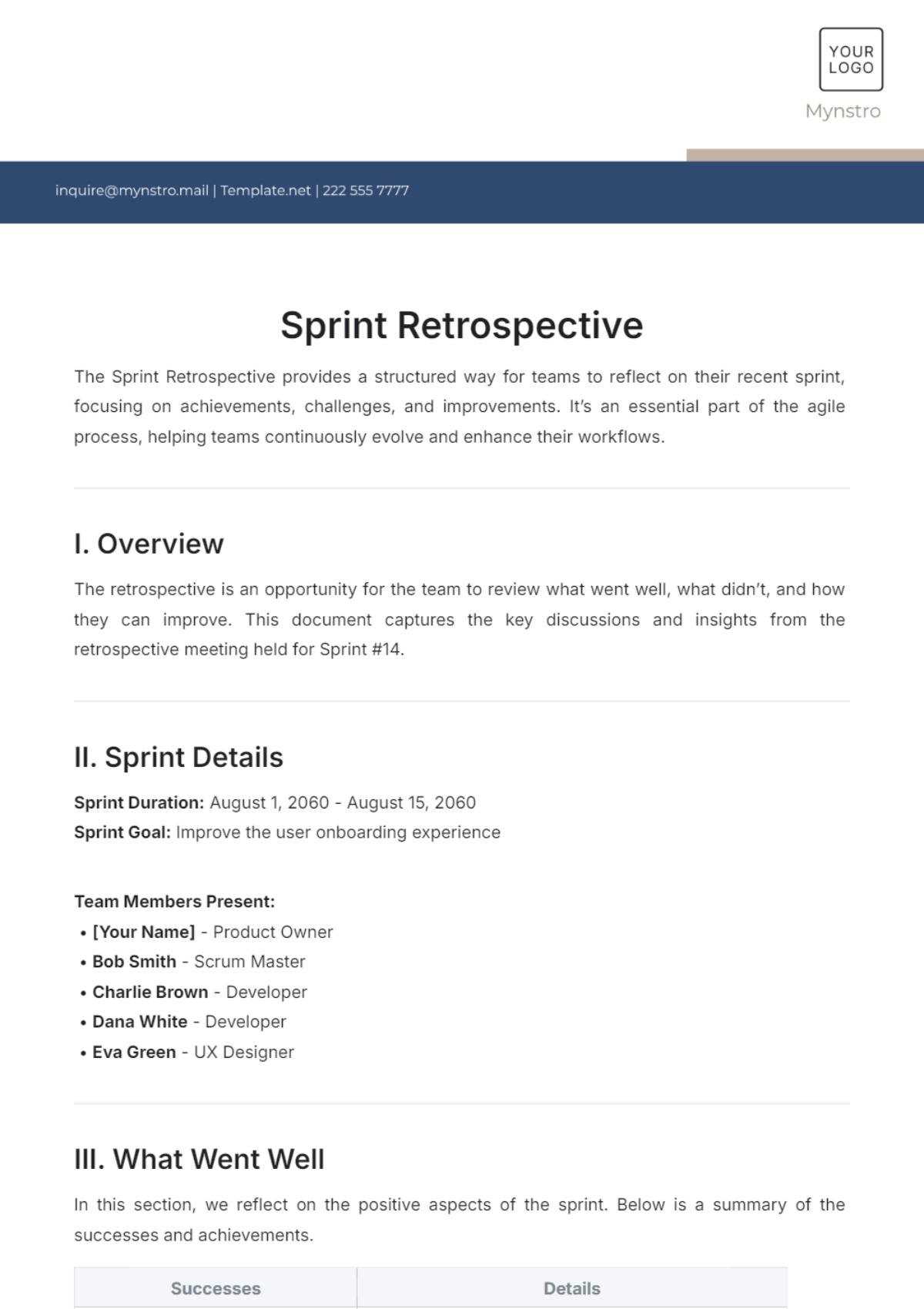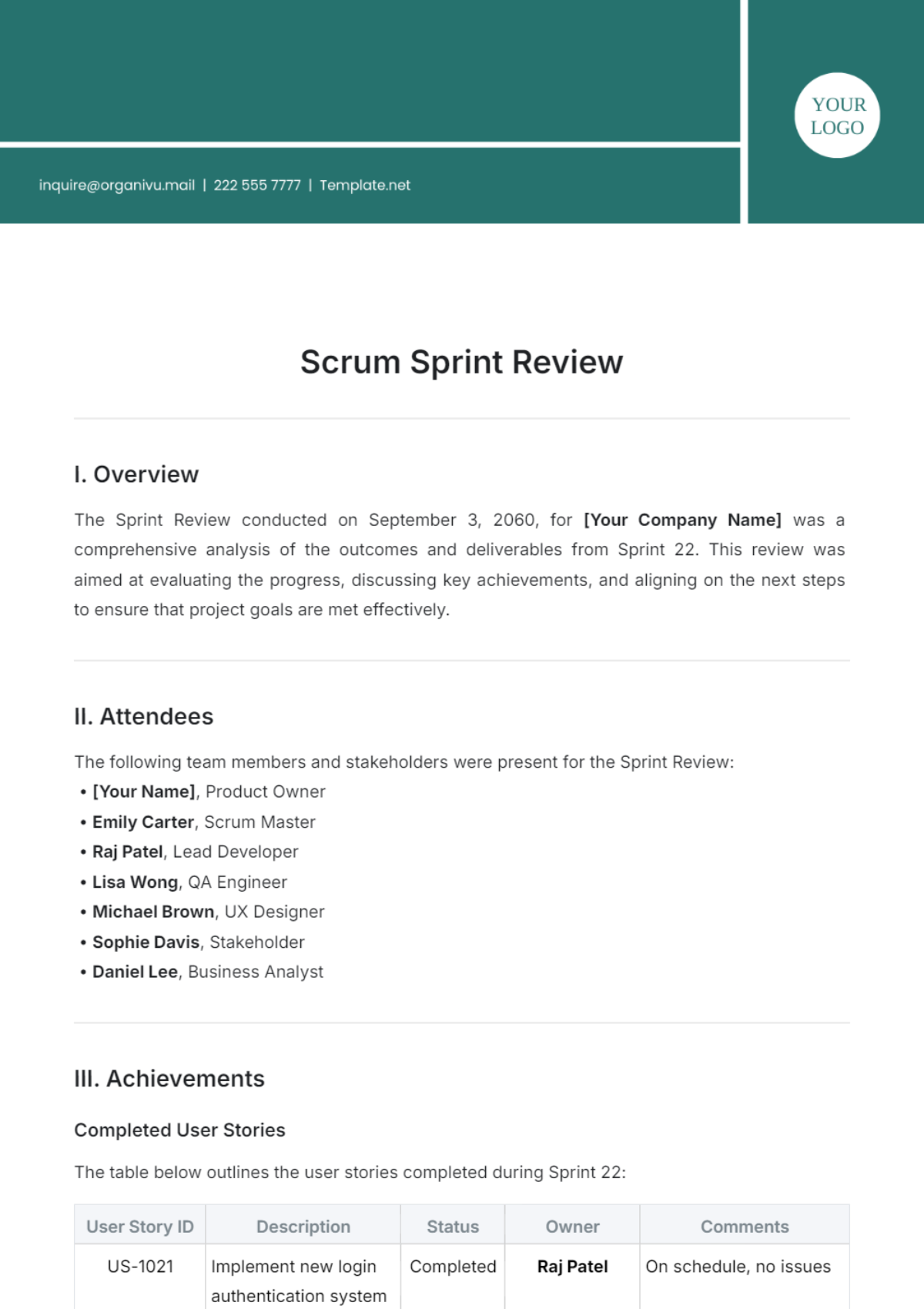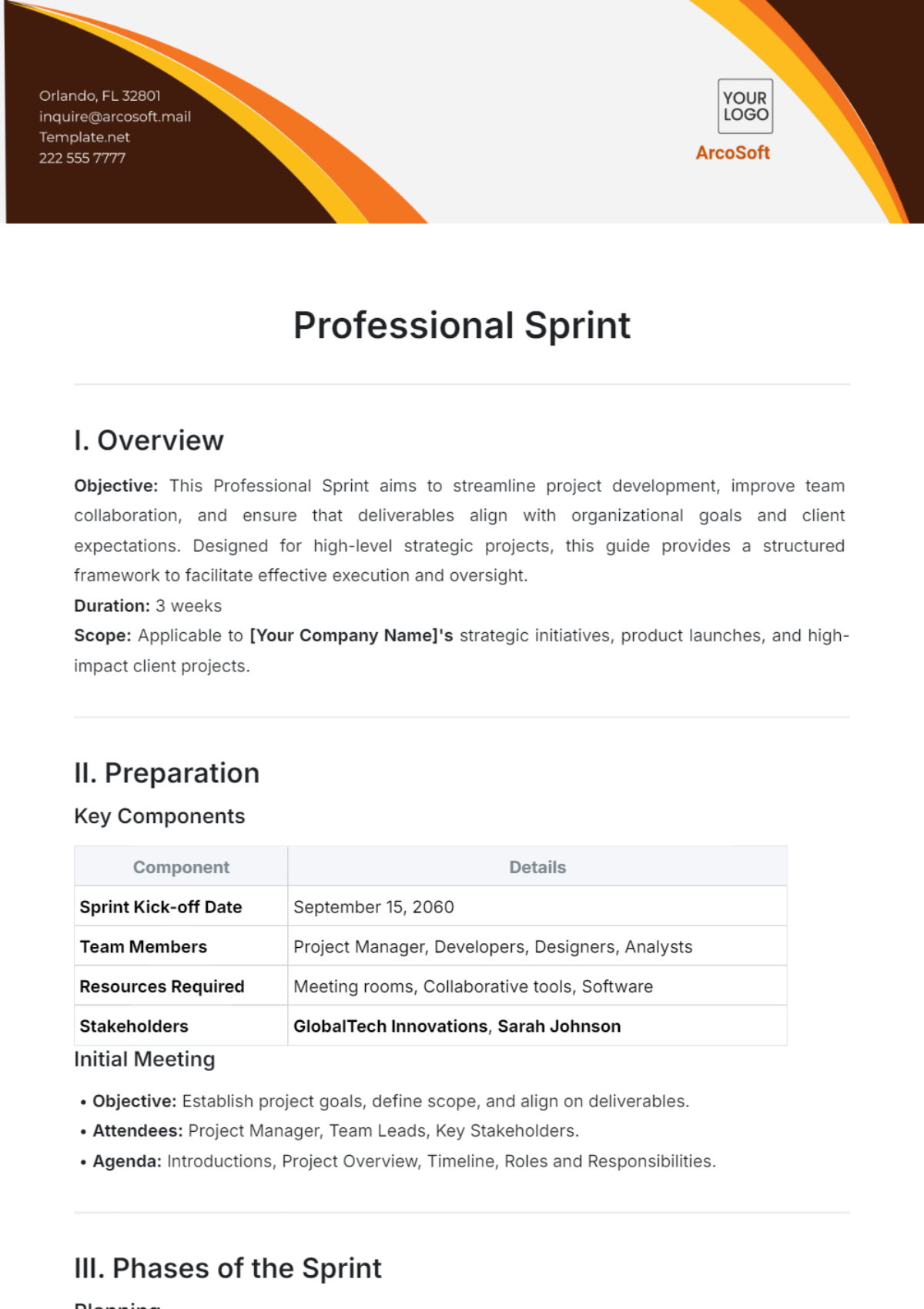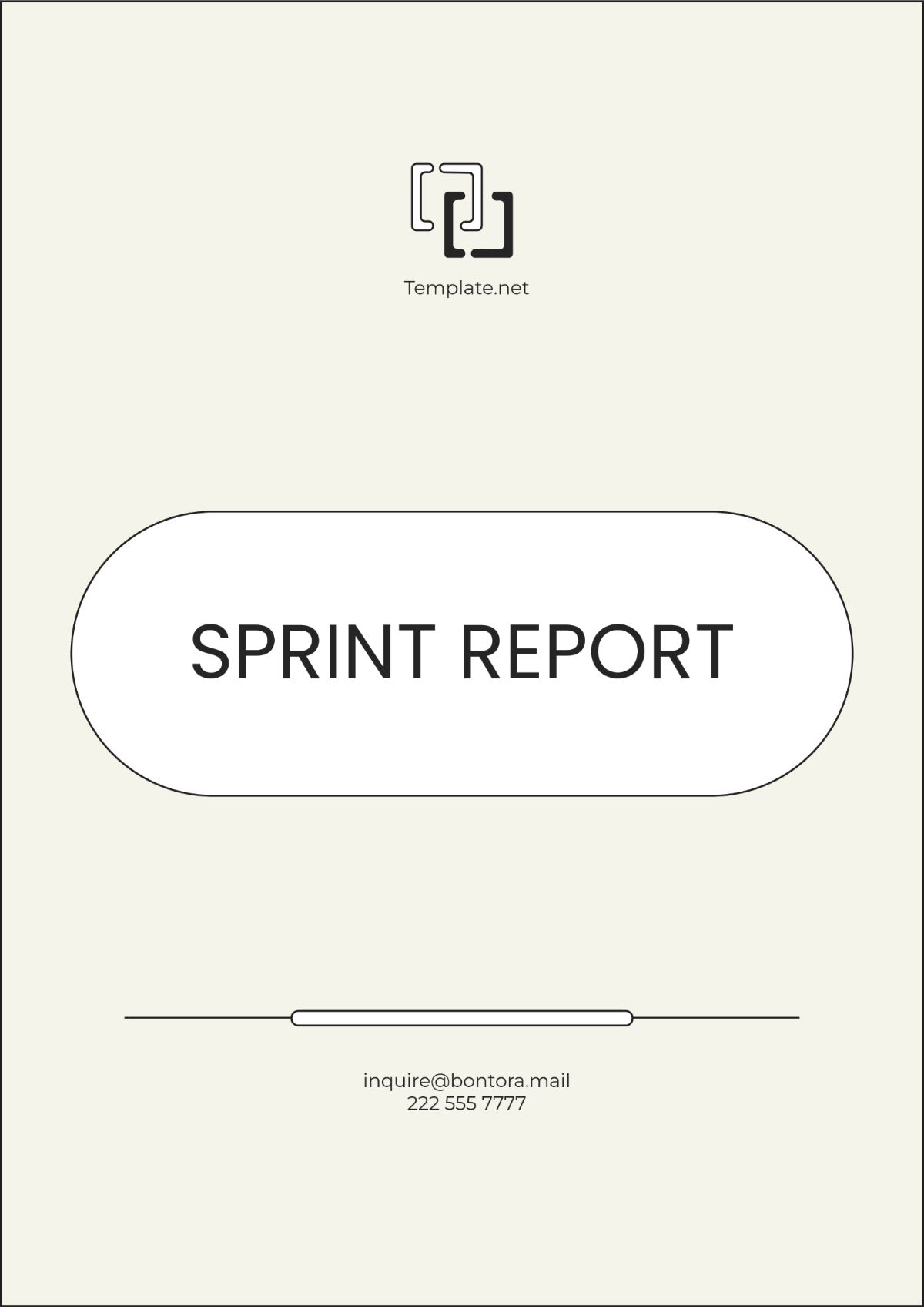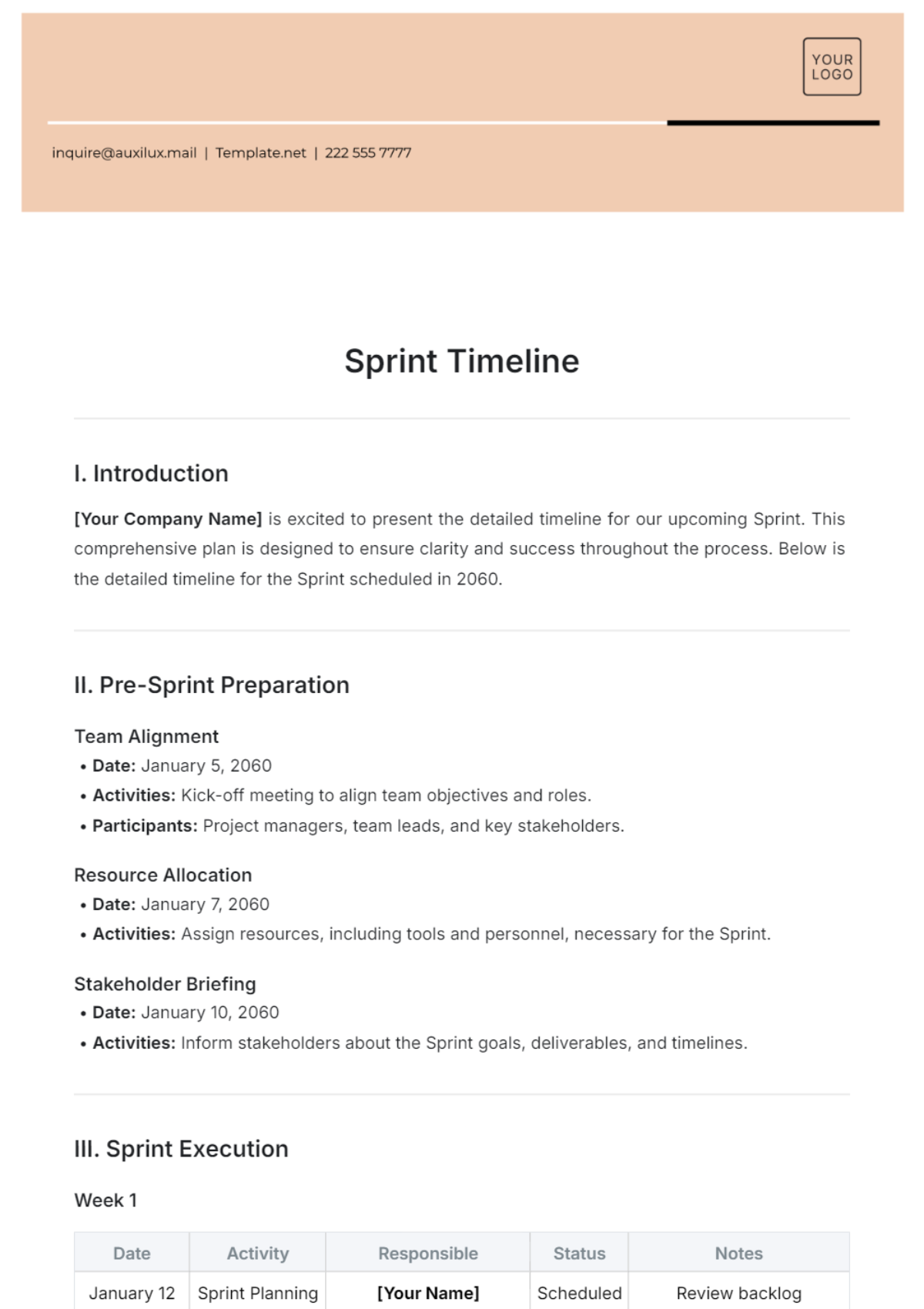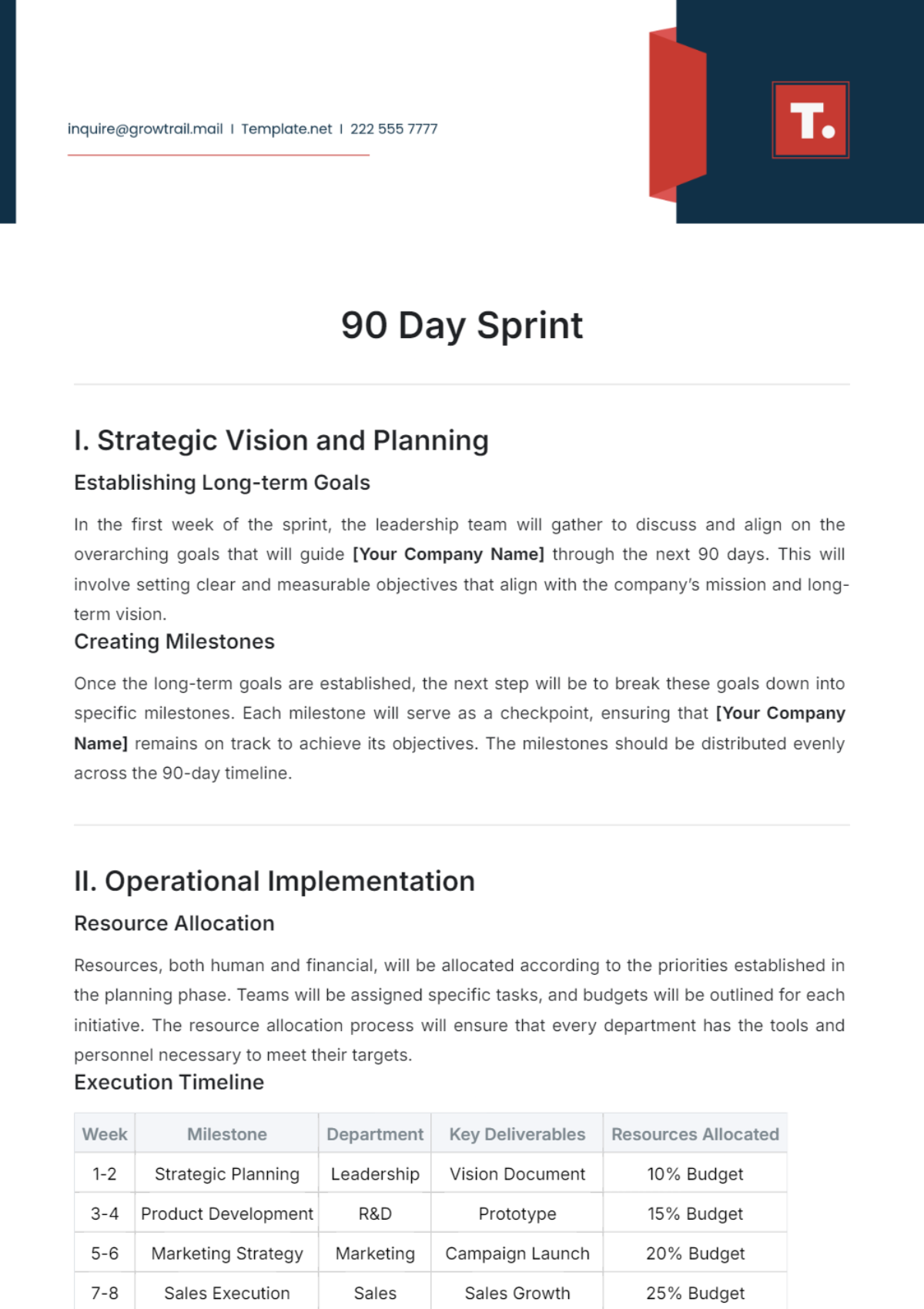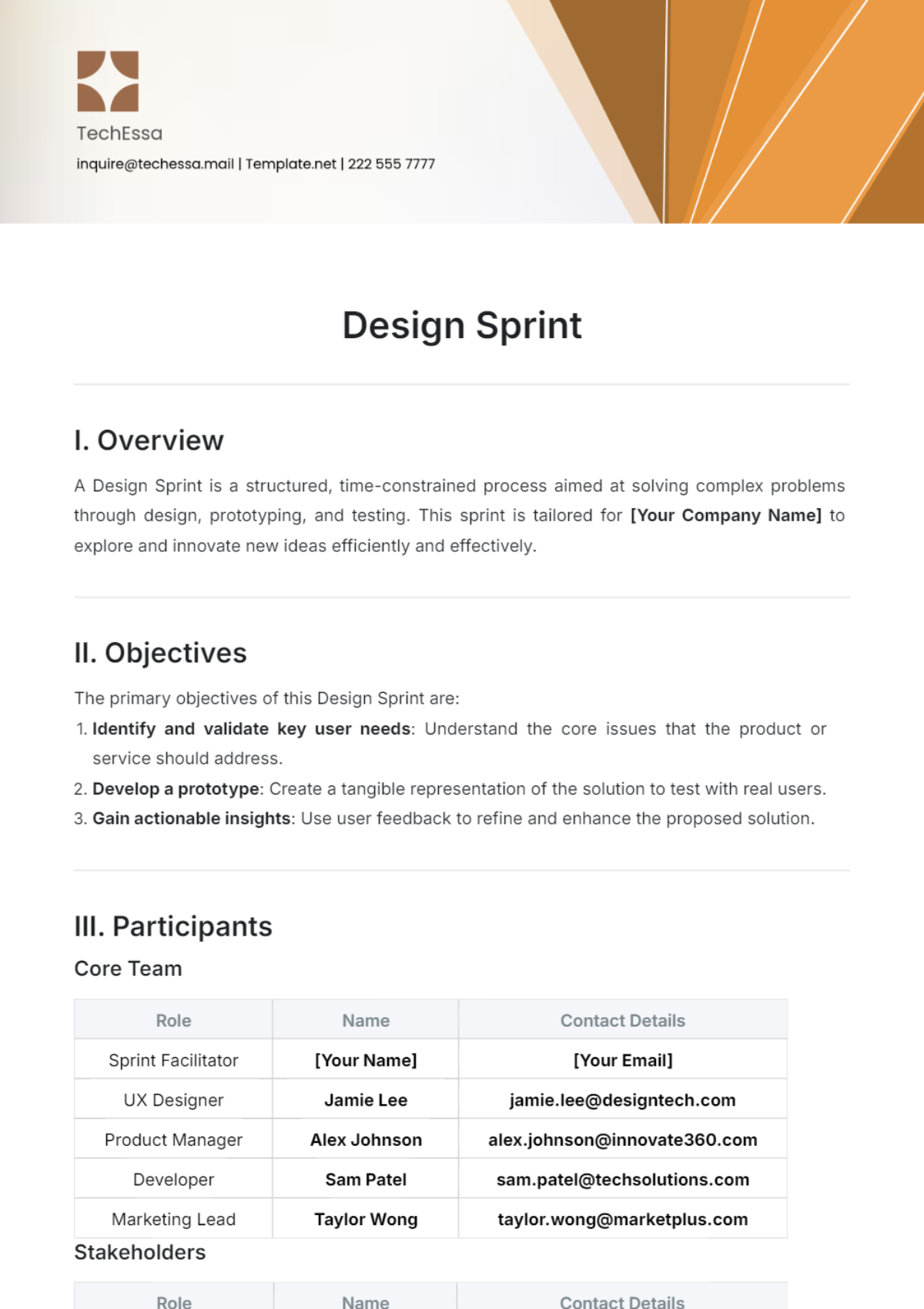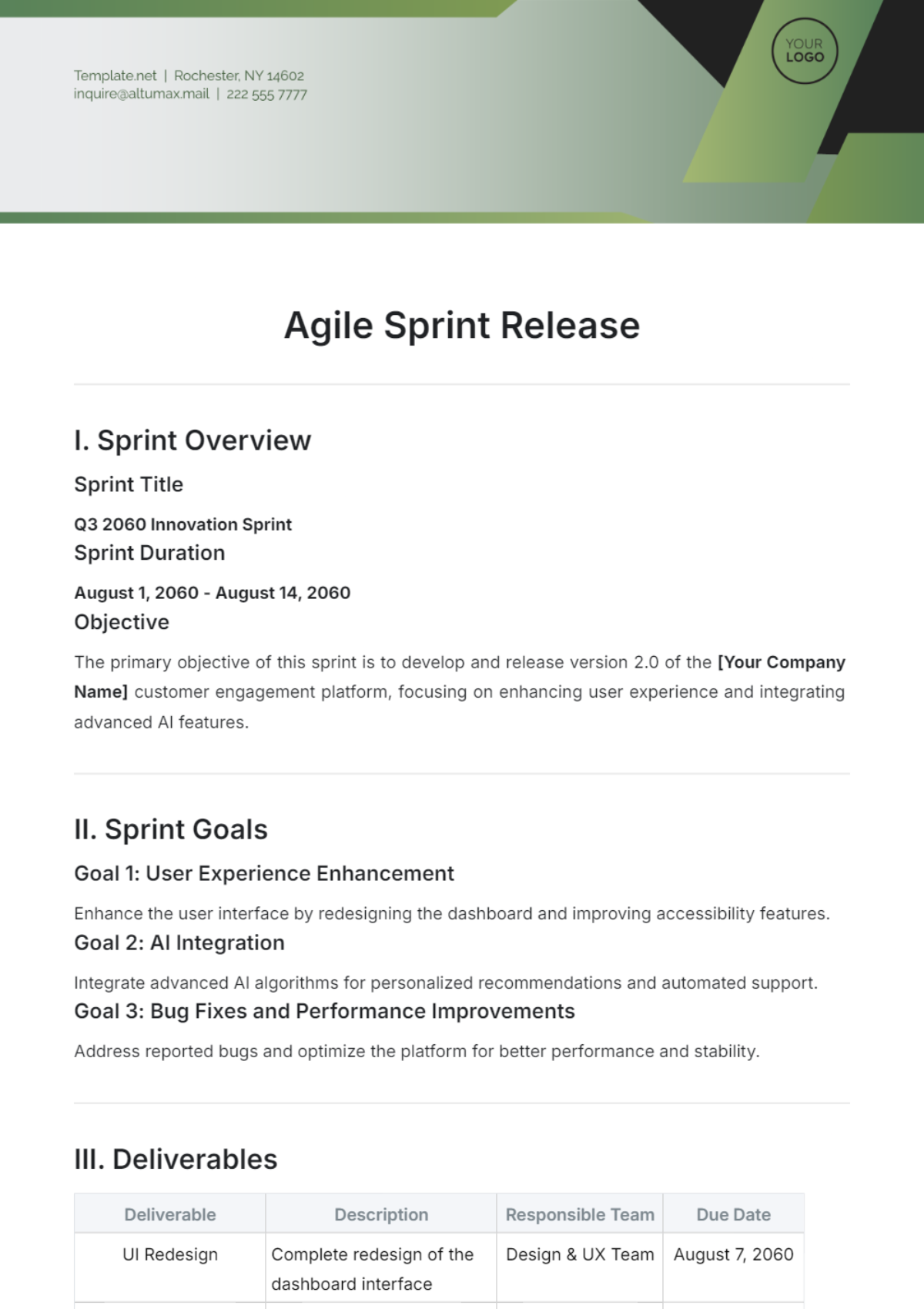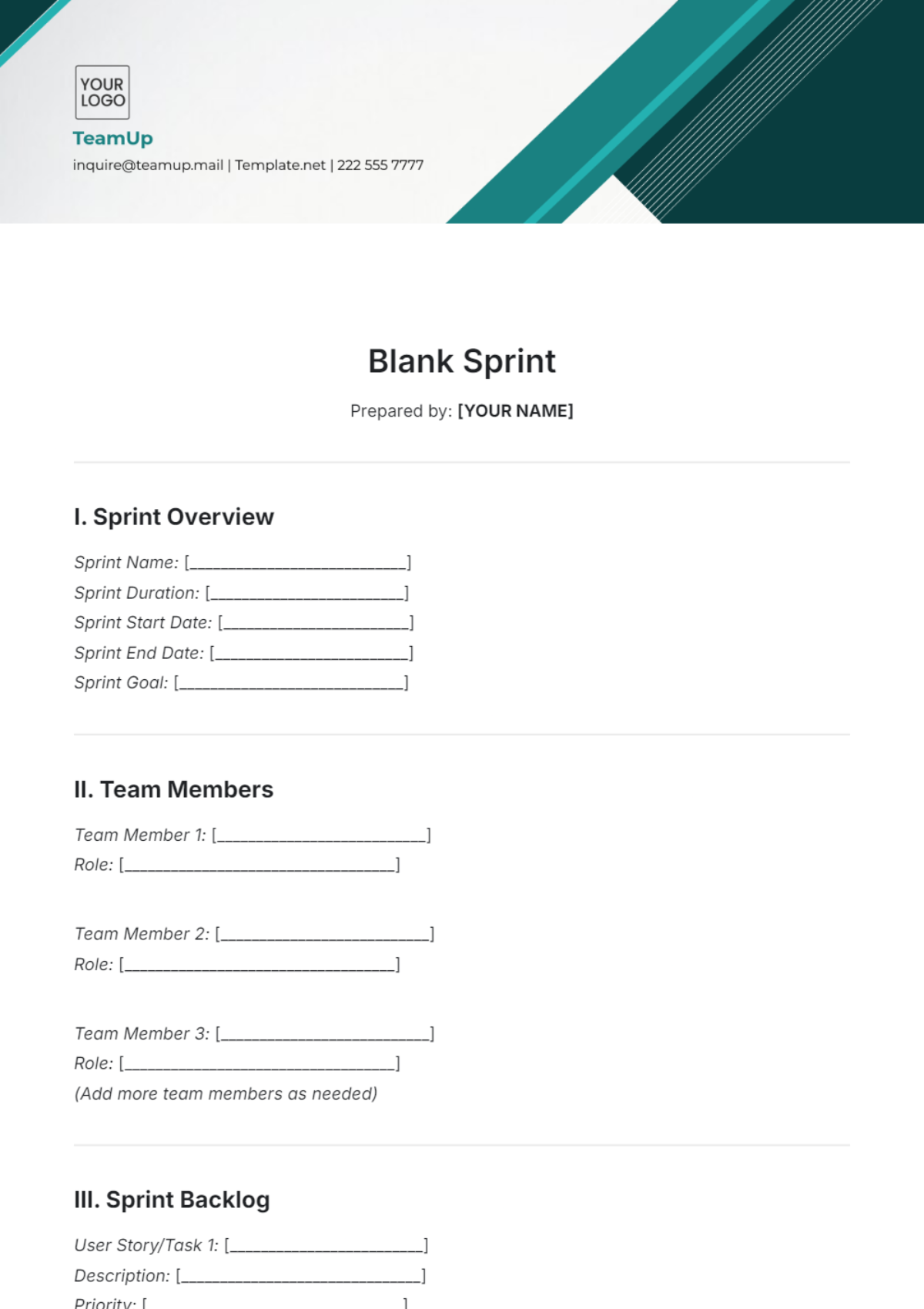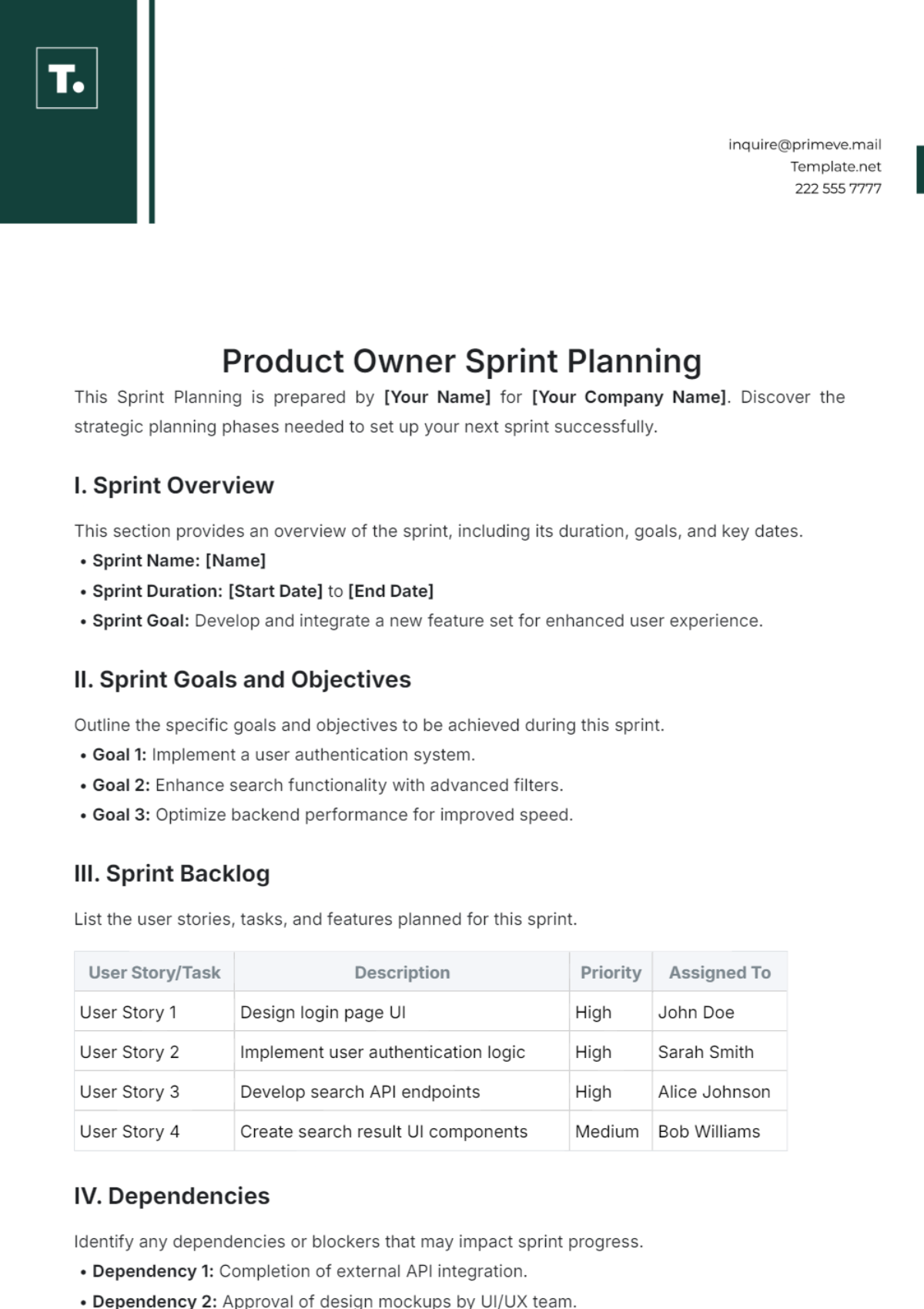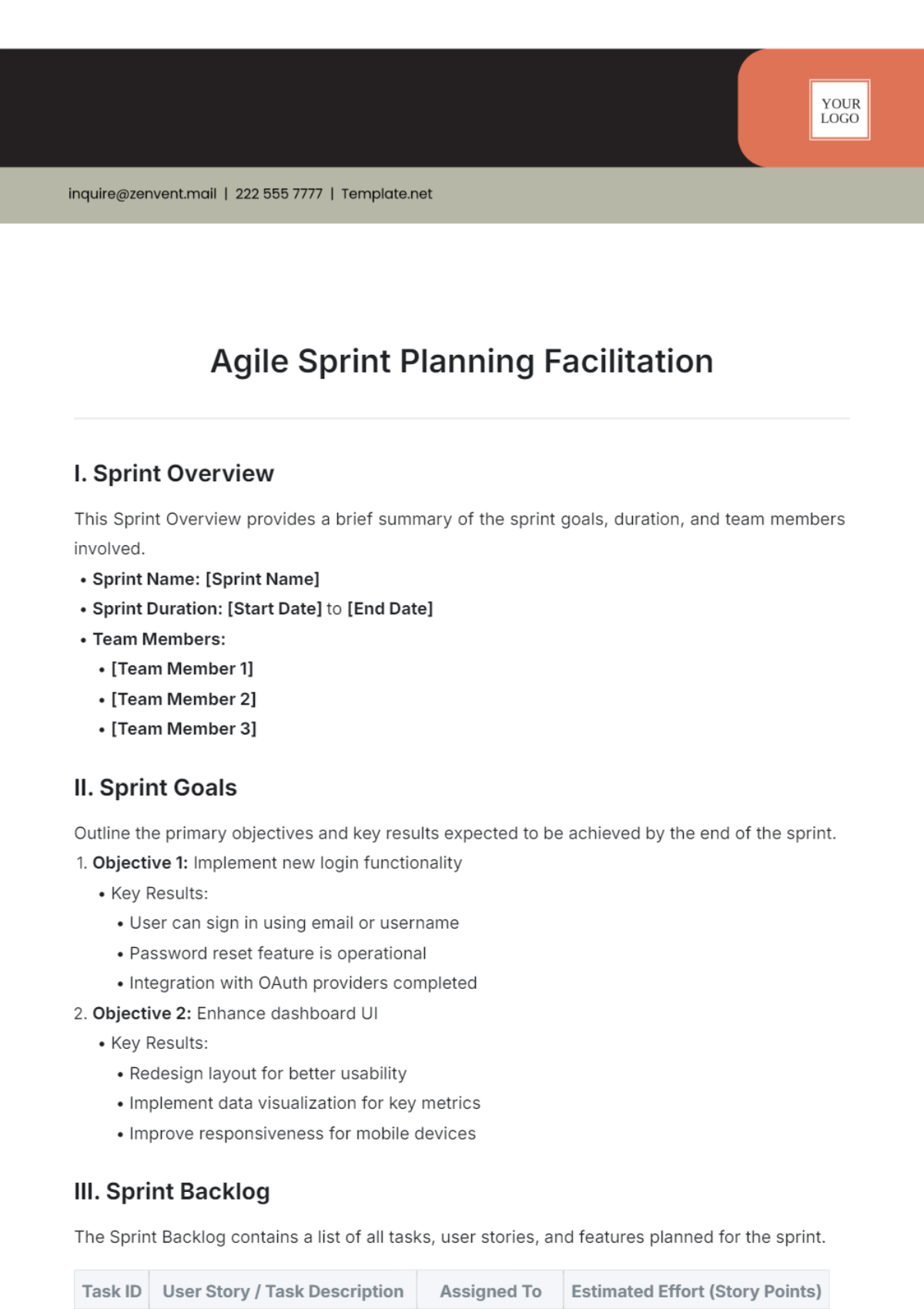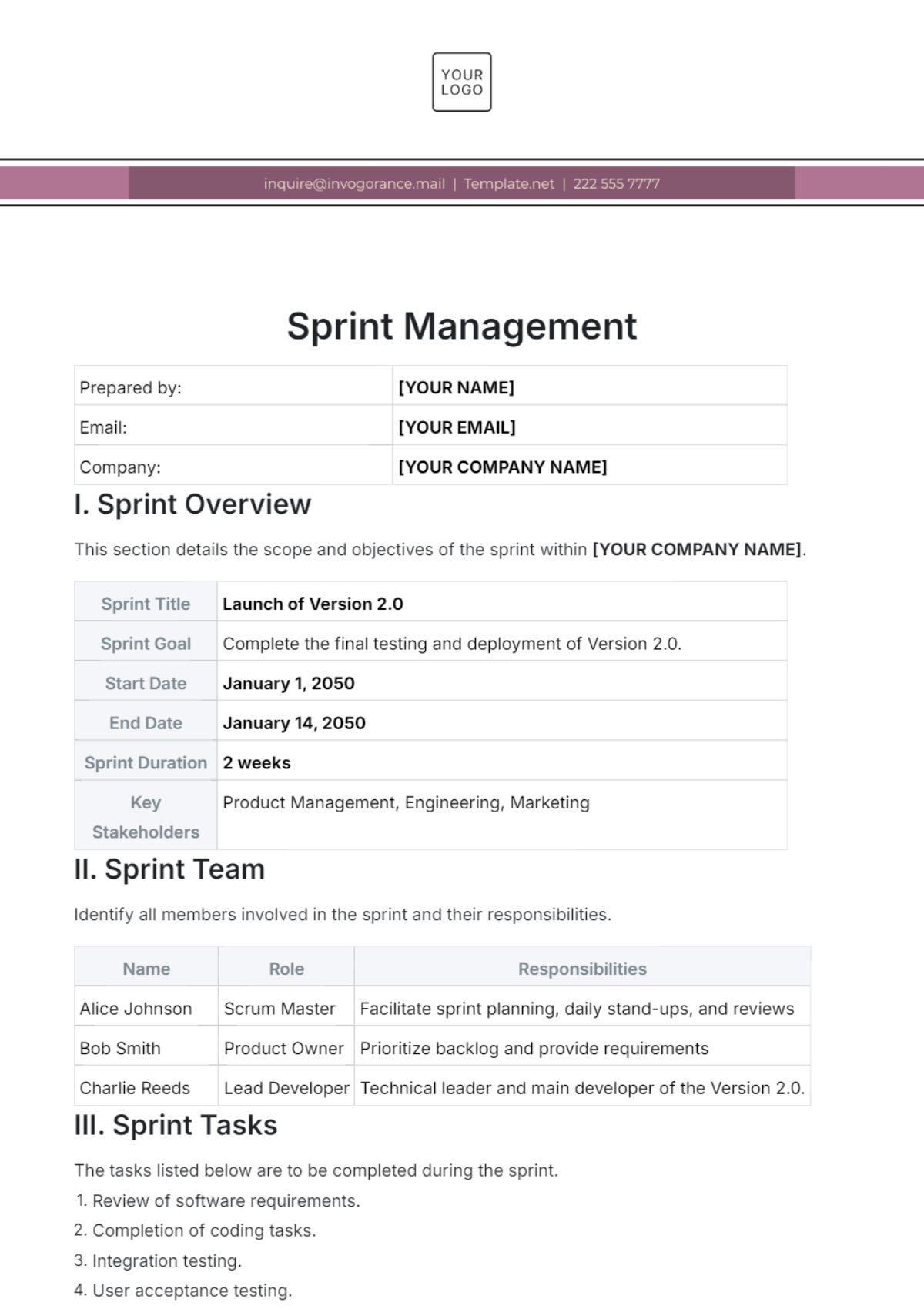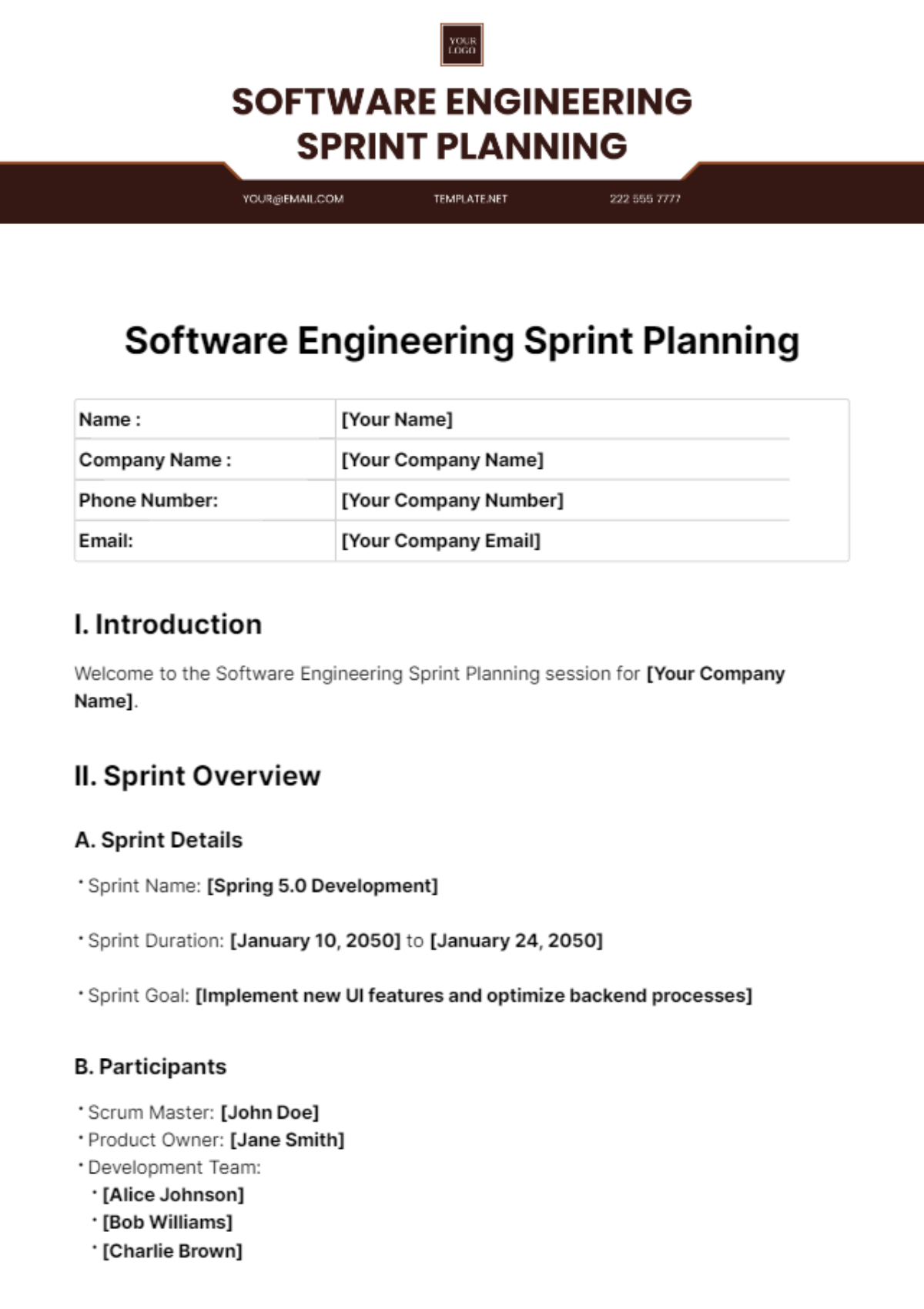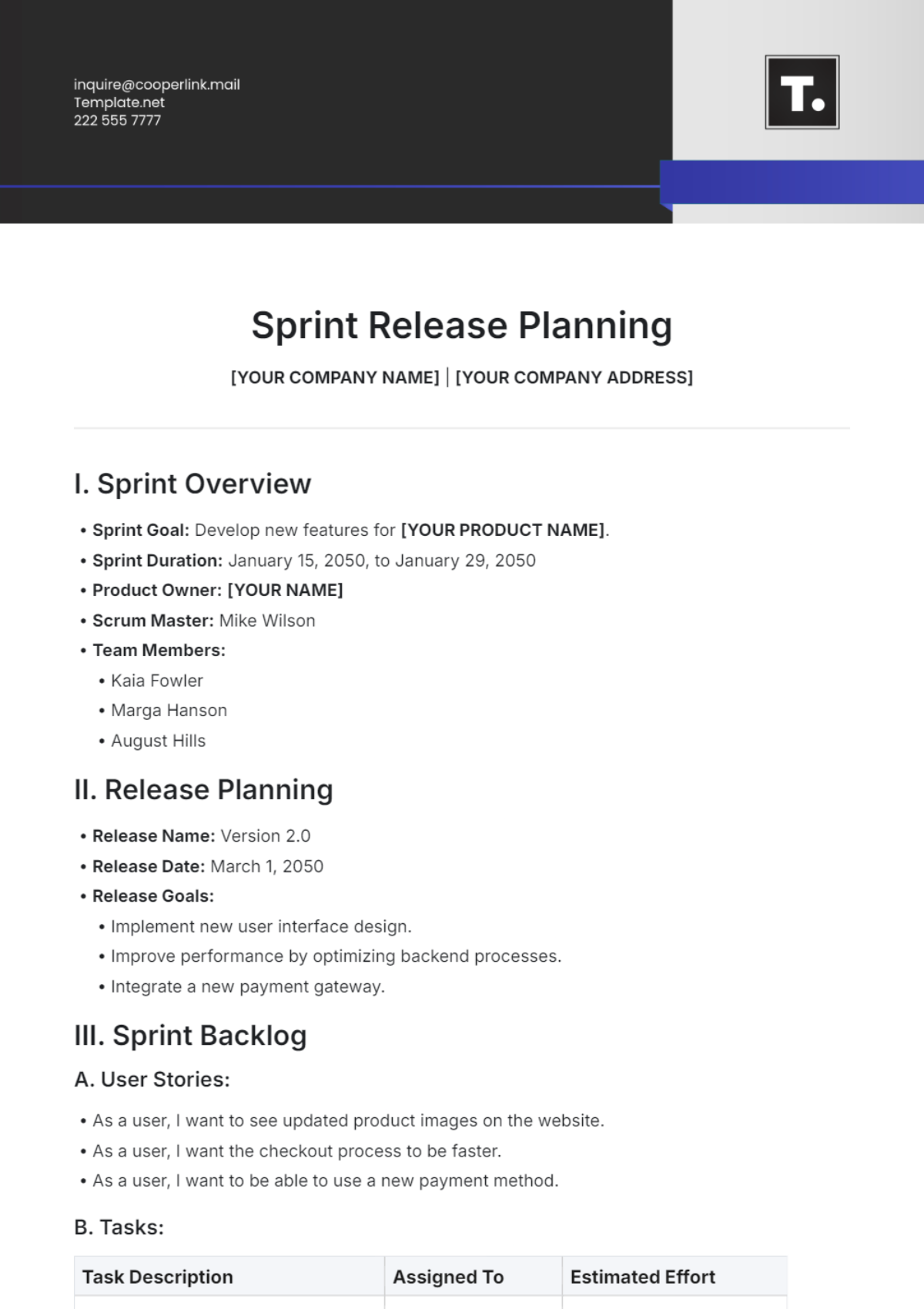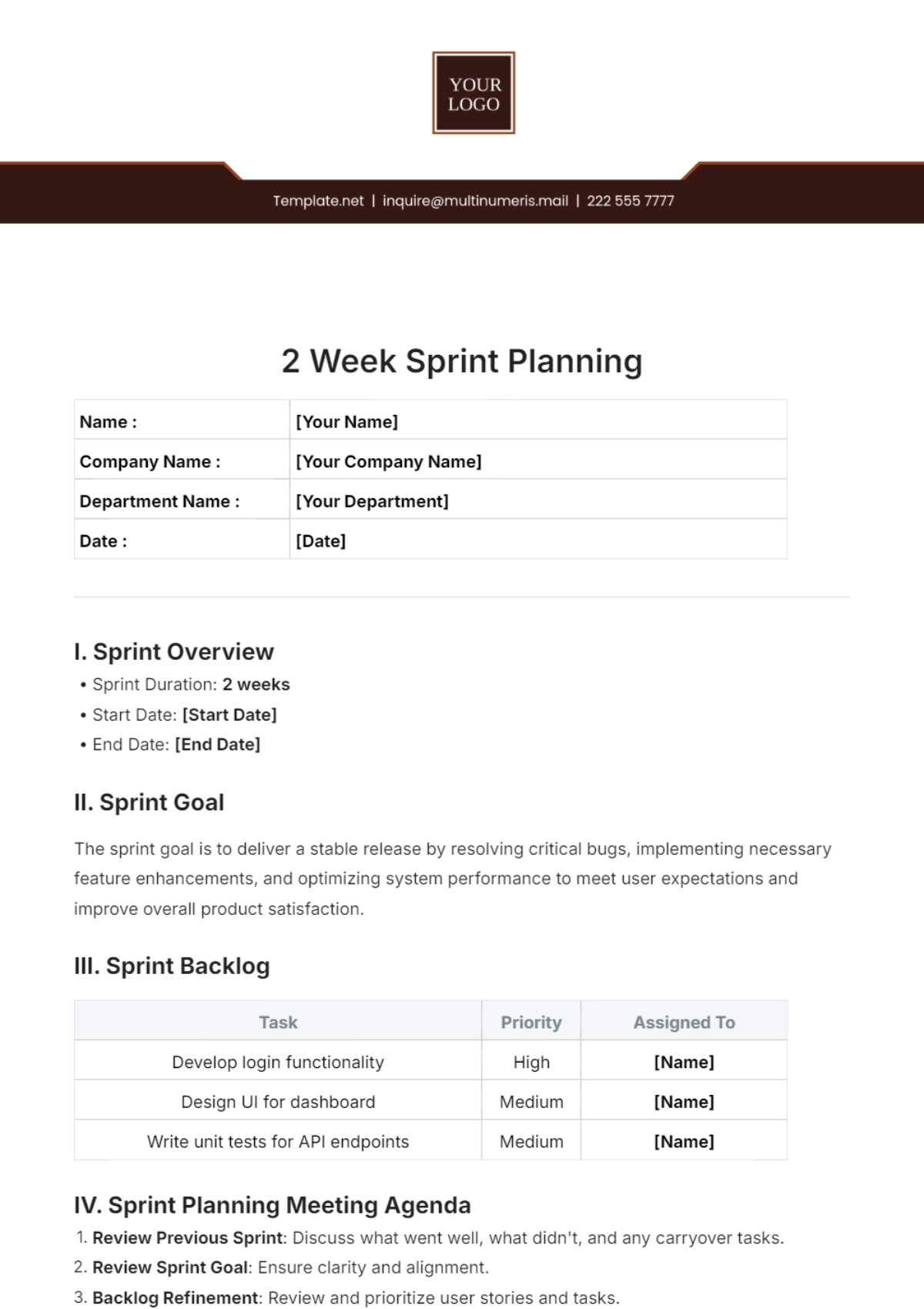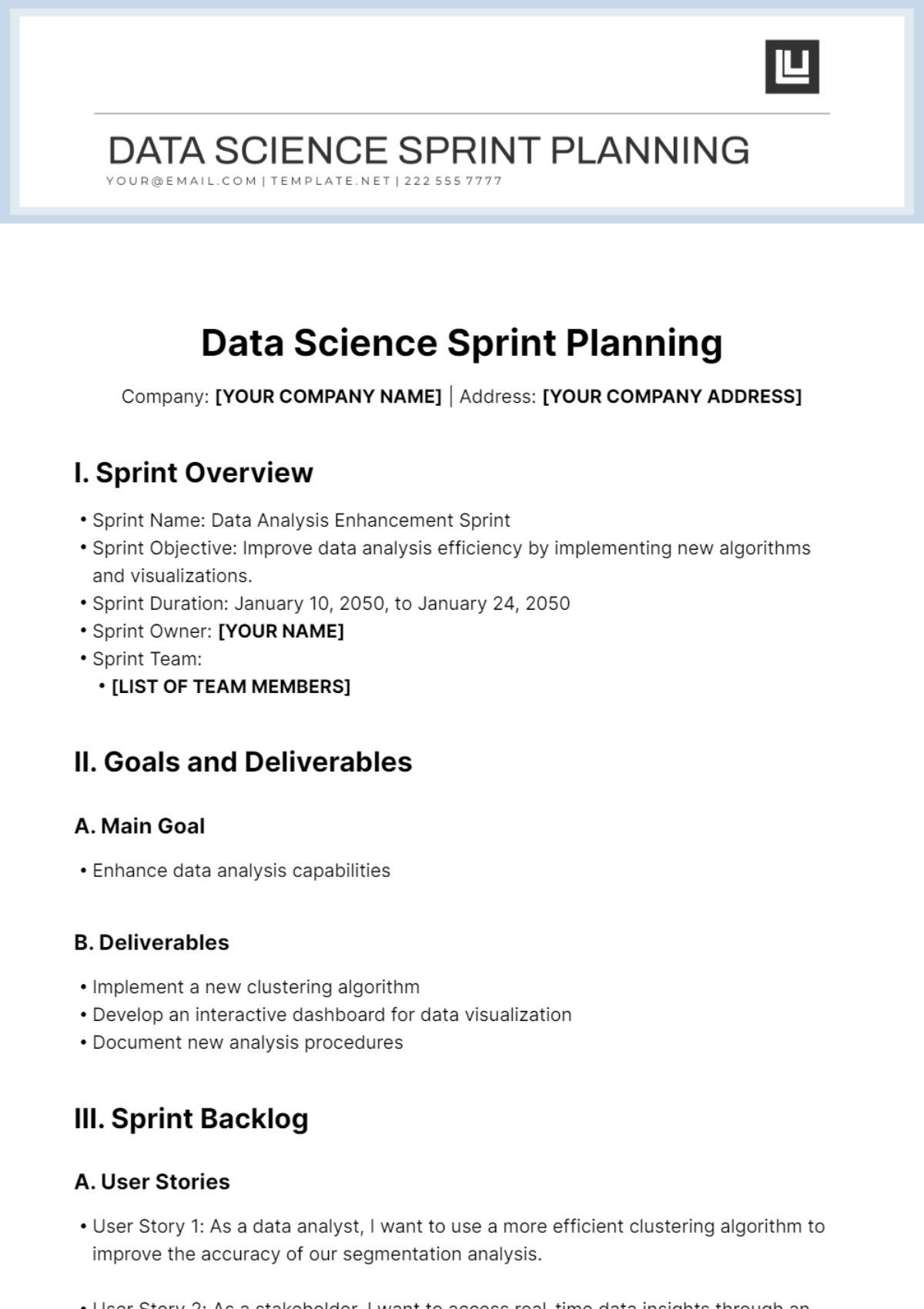Sprint Planning for Teams
As organizations continually adapt to evolving challenges, efficient sprint planning is crucial for maintaining momentum and ensuring project success. This document outlines a comprehensive sprint planning framework designed to optimize team performance and align project goals.
I. Overview
Purpose
The purpose of this sprint planning document is to establish a structured approach to manage and execute sprints effectively. This includes setting clear objectives, defining roles, and organizing tasks to maximize team productivity.
Duration
Each sprint will last for two weeks, providing ample time for teams to complete their tasks and review their progress.
II. Sprint Goals
Objective Setting
Define specific and measurable goals for the sprint. These objectives should align with overall project milestones and team capabilities.
Objective 1: Increase website traffic by 20% through SEO improvements.
Objective 2: Develop and launch new feature X by the end of the sprint.
Objective 3: Resolve 15 outstanding customer support tickets.
Success Criteria
Establish criteria for evaluating the success of the sprint, including:
Completion of all tasks within the sprint.
Achievement of the predefined objectives.
Positive feedback from stakeholders.
III. Team Roles and Responsibilities
Roles
Clearly define roles within the team to ensure accountability and efficient task management. The table below outlines common roles and their responsibilities:
Role | Responsibilities |
|---|---|
Product Owner | Define sprint goals, prioritize tasks, and provide feedback. |
Scrum Master | Facilitate sprint planning meetings, remove obstacles, and ensure team adherence to Agile practices. |
Development Team | Execute tasks, develop features, and deliver sprint goals. |
QA Engineer | Test completed tasks to ensure quality and functionality. |
UX Designer | Design user interfaces and experiences in line with sprint goals. |
Contact Information
For any questions or clarifications, reach out to:
Product Owner: Alex Johnson, alex.johnson@example.com
Scrum Master: Maria Smith, maria.smith@example.com
Development Team Lead: John Doe, john.doe@example.com
IV. Sprint Planning Meeting
Agenda
The sprint planning meeting will cover the following agenda items:
Review of Previous Sprint: Assess completed tasks and identify areas for improvement.
Sprint Goal Definition: Agree on specific objectives for the current sprint.
Task Breakdown: Decompose objectives into manageable tasks and assign them to team members.
Estimation: Estimate the effort required for each task using story points or time estimates.
Commitment: Confirm team commitment to the sprint goals and tasks.
Meeting Schedule
Date | Time | Location | Participants |
|---|---|---|---|
September 5, 2060 | 10:00 AM | Conference Room B | Product Owner, Scrum Master, Development Team |
September 6, 2060 | 2:00 PM | Virtual Meeting | QA Engineer, UX Designer |
V. Task Management
Task Assignment
Tasks will be assigned based on team members' skills and availability. Ensure each task has a clear owner and deadline.
Tracking Progress
Utilize a task-tracking tool to monitor progress and update the status of tasks. Regularly review progress during daily stand-ups.
VI. Review and Retrospective
Sprint Review
At the end of the sprint, conduct a review meeting to showcase completed work and gather feedback from stakeholders.
Sprint Retrospective
Hold a retrospective meeting to discuss what went well, what could be improved, and actionable steps for the next sprint.
VII. Contact Information
For additional support or inquiries regarding this sprint planning document, please contact:
[Your Name], [Your Email]
[Your Company Name], [Your Company Address], [Your Company Number], [Your Company Email]
This detailed sprint planning framework will assist your team in achieving its goals effectively and efficiently. If you have any questions or need further assistance, please reach out to the contacts provided.
